School Energy Inspectors
Student Guide







Energy helps us do things. It gives us light. It warms our bodies and homes. It bakes cakes and keeps milk cold. It runs our TVs and our cars. It makes us grow and move and think. Energy is the power to change things. It is the ability to do work.
Light is a form of energy we use all the time. We use it so we can see. We get most of our light from the sun. Working during the day saves money because sunlight is free.
At night, we must make our own light. Usually, we use electricity to make light. Flashlights use electricity, too. This electricity comes from batteries.
We use energy to make heat. The food we eat keeps our bodies warm. Sometimes, when we run or work hard, we get really hot. In the winter, our jackets and blankets hold in our body heat.
We use the energy stored in plants and other things to make heat. We burn wood and natural gas to cook food and warm our houses. Factories burn fuel to make the products they sell. Power plants burn coal and natural gas to make electricity.
All living things need energy to grow. Plants use light from the sun to grow. Plants change the energy from the sun into sugar and store it in their roots and leaves. This is called photosynthesis.
Animals can’t change light energy into sugars. Animals, including people, eat plants and use the energy stored in them to grow. Animals can store the energy from plants in their bodies.

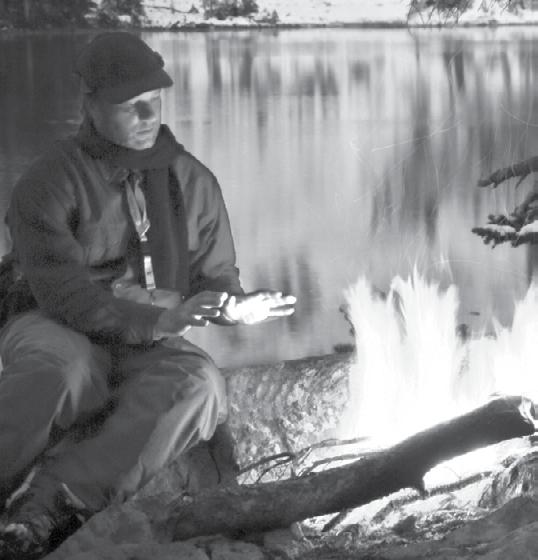

It takes energy to make things move. Cars and motorcycles run on the energy stored in gasoline. Many toys run on the energy stored in batteries. Sail boats are pushed by the energy in the wind.
After a long day, do you ever feel too tired to move? You’ve run out of energy. You need to eat some food to refuel.

It takes energy to run our TVs, computers, and video games— energy in the form of electricity. We use electricity many times every day. It gives us light and heat, it makes things move, and it runs our toys, electronics, and microwaves. Imagine what your life would be like without electricity.
We make electricity by burning coal, oil, gas, and even trash. We make it from the energy that holds atoms together. We make it with energy from the sun, the wind, and falling water. Sometimes, we use heat from inside the Earth to make electricity.
There is the same amount of energy today as there was when the world began. When we use energy, we don’t use it up completely; we change it into other forms of energy. When we burn wood, we change its energy into heat and light. When we drive a car, we change the energy in the gasoline into heat and motion.
There will always be the same amount of energy in the world, but more and more of it will be changed into heat. Most of that heat will go into the air. It will still be there, but it will be hard to use.
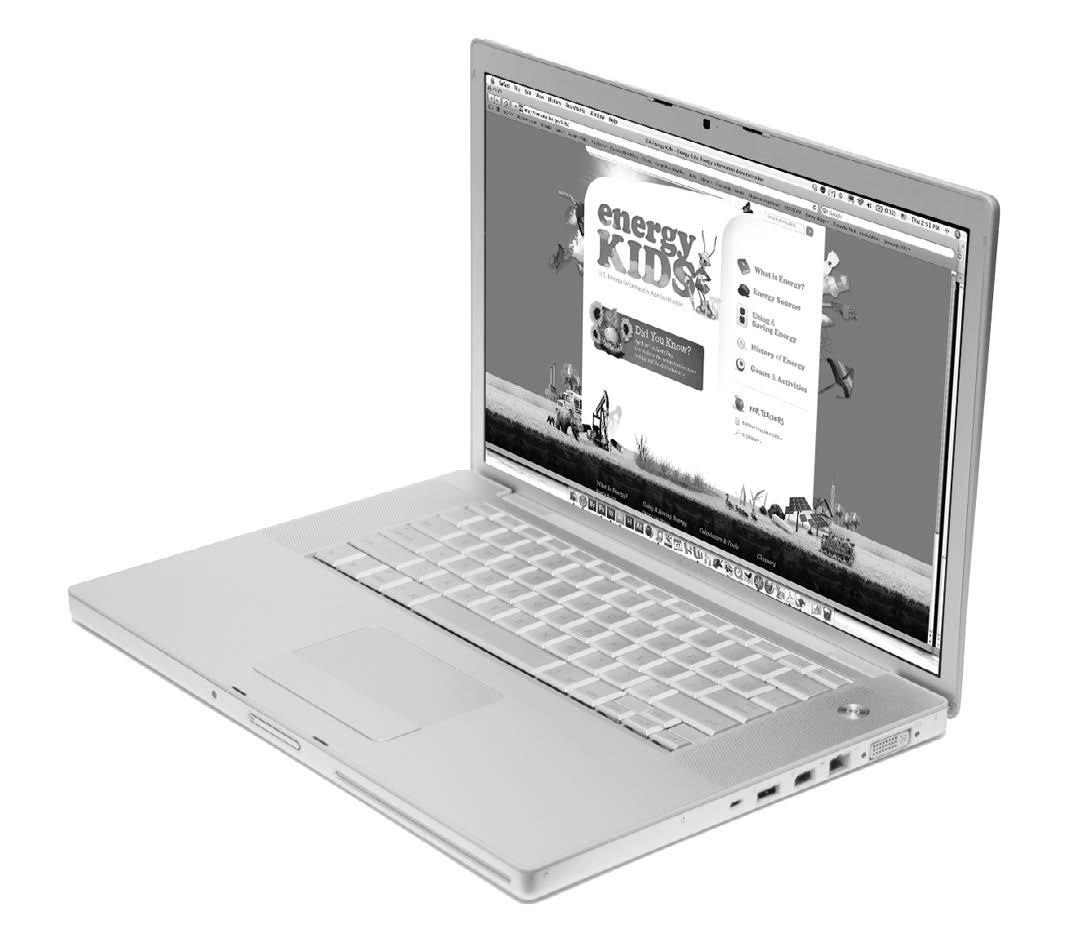

Scientists classify energy as more than just light, heat sound, motion, growth, and technology. They classify energy into different forms based on how they change or do work. There are many forms of energy, but they can all be put into two categories: potential and kinetic.
Potential energy is stored energy. There are several forms of potential energy.
Chemical energy is energy stored between the bonds of atoms and molecules. It is the energy that holds these particles together. Biomass, petroleum, natural gas, propane, and the foods we eat are examples of stored chemical energy. Plants turn light into chemical energy through photosynthesis.
Elastic energy is energy stored in compressed or stretched objects. Compressed springs and stretched rubber bands are examples of elastic energy.
Nuclear energy is energy stored in the nucleus of an atom. It is the energy that holds the nucleus together. The energy can be released when the nuclei are pushed together or split apart. The sun uses nuclear energy to produce light. Nuclear power plants create electricity with nuclei.
Gravitational potential energy is the energy of place or position. A rock resting at the top of a hill contains gravitational potential energy because of its position. Hydropower, such as water in a reservoir behind a dam, is an example of gravitational potential energy.
Kinetic energy is energy in motion; it is the motion of waves, electrons, atoms, molecules, substances, and objects.
Electrical energy is the movement of electrons. Everything is made of tiny particles called atoms. Atoms are made of even smaller particles called electrons, protons, and neutrons. When electrons move through a wire we have electricity. Lightning is another example of electrical energy.
Radiant energy is electromagnetic energy that travels in an up and down motion. These waves are called transverse waves. Radiant energy includes light, x-rays, radio waves. Sunlight is an example of radiant energy.
Thermal energy, or heat, is the internal energy in a substance. Thermal energy is the vibration and movement of the atoms and molecules within a substance. A hot drink has more thermal energy than a cold drink.
Motion energy is the movement of an object from one place to another. A moving windmill is an example of motion energy.
Sound energy is when energy moves in waves that move side to side. These waves are called longitudinal waves. Sound is created when a force causes the object to vibrate. The energy is moved through the object longways in a longitudinal wave. A siren is an example of sound energy.
Nonrenewable Sources
Renewable Sources
Nonrenewable Energy Sources and Percentage of Total Energy Consumption
transportation, manufacturing
- Includes Propane
Includes Propane
electricity, manufacturing
Renewable Energy Sources and Percentage of Total Energy Consumption
*Propane consumption is included in petroleum and natural gas gures.
heating, manufacturing
heating, electricity, transportation
Data: Energy Information Administration
*Total does not equal 100% due to independent rounding.
heating, electricity
In the United States we use ten energy sources to do work. We put these sources into two categories: nonrenewable and renewable.
The nonrenewable energy sources we use are petroleum, coal, natural gas, propane, and uranium. These sources are found in the Earth. It takes a very long time for the Earth to produce these sources. Once we use them, we can’t use them again or get them back quickly. We use nonrenewable energy sources to move our cars, heat our homes, and make electricity.
Renewable energy sources can be used over and over again. It does not take very long to replenish the supply of these resources, so we will never run out. Renewable energy sources are biomass, hydropower, solar energy, wind energy, and geothermal energy. Day after day, the sun shines, the wind blows, and the rivers flow. We use renewable energy sources mainly to make electricity.
Nonrenewable sources are relatively inexpensive and we can use them 24 hours a day. Some renewable sources like solar and wind are free to use, because no one owns the sun or the wind. The machines and parts needed to turn these sources into energy we can use can be expensive, however. Every source of energy has advantages and disadvantages to using it.
The United States uses a lot of energy. All of us use energy every day—for getting from one place to another, cooking, heating and cooling rooms, making products, lighting, heating water, and entertainment. We use a lot of energy to make our lives comfortable, productive, and enjoyable. Most of that energy is from nonrenewable energy sources. It is important that we use our energy resources wisely.
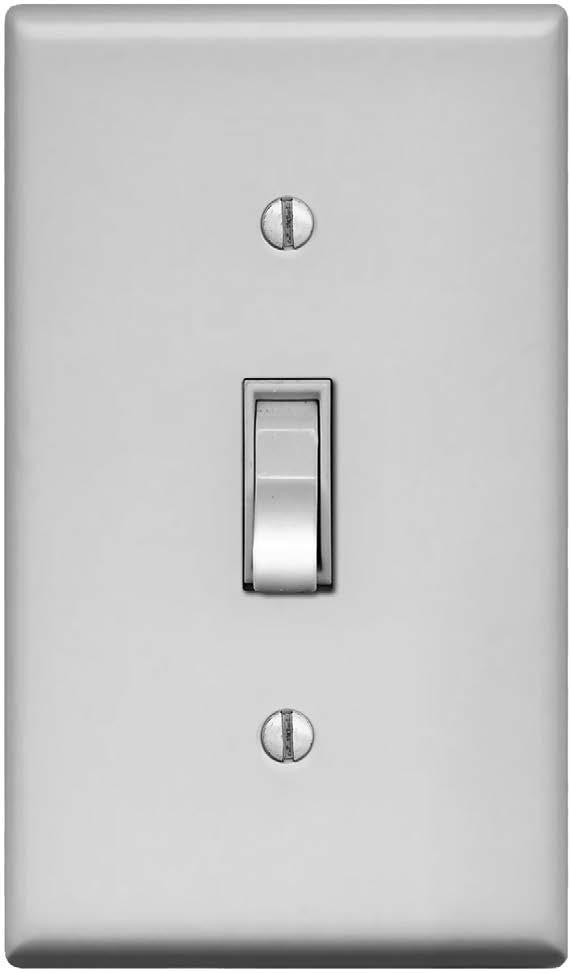
Your parents may tell you to conserve energy. “Turn off the lights,” they say. Energy conservation is about saving energy. Energy conservation involves all the behaviors that we use to control our energy use. Use only what you need. Don’t turn on two lights if you only need one. Remember to turn off the lights when you leave a room. Turn off
the TV and video games, too. Unplug devices you aren’t using. On a sunny day, read by a window. Keep the refrigerator door closed. Know what you want before you open the door. If you’re pouring a drink, don’t leave the door open. It takes a lot of energy to cool things. If the air conditioner is on, keep doors and windows closed. If you can, just use a fan and wear light clothes instead of using the air conditioner. Walk or ride your bike wherever you can. When you take a bath, use only the water you need.
Energy efficiency is saving energy with specialized machines or equipment to complete a task. It might be a washing machine, a light bulb, or your family’s vehicle, but they are all some kind of device that does work for us. If we say we are being more energy efficient, we are using devices that use less energy to perform the work. For example, a heavy duty pickup truck and a small sedan will both carry two people to work. However, the small sedan will use less fuel to do so, so it is more efficient. A new, ENERGY STAR® refrigerator will use less energy than an old refrigerator. Upgrading old light bulbs to more efficient bulbs like LEDs will save energy while still brightening the room.
Even the most efficient machines need people acting in conserving ways to make them of any use. An LED light is the most efficient lighting type available, but if the lights are left on all day every day, they’re still using more energy than they should. The owners of that LED light need to turn it off and exhibit good energy conservation.
We use energy in many different areas of our lives. When we use energy at home, this is called residential energy use. When we use energy in office buildings, hospitals, stores, restaurants, and schools, we call this commercial energy use. We also use energy to create products and manufacture goods. This is called industrial energy use. When we use energy to move people or things from place to place, this is called transportation energy use. Every different type of energy use also requires electricity. We use energy sources to generate electricity. In the U.S. most of our energy is used to create electricity, move people, and make our goods.

Residential and commercial buildings use energy in similar ways. Both use energy for heating, air conditioning, water heating, lighting, and powering appliances and machines. Schools use more energy than homes, and often use more energy in other areas than you might use in a house because of all of the students inside and the work they do while they are in school.
It is important to think about water when we think about energy use. We need energy to purify or treat our water for safe drinking and use. We also need water to generate electricity. When water is removed from a river or reservoir, it must be pumped to the water treatment plant. Pumps are used to pull and move the water to the treatment facility, and each pump uses energy to run.
At the treatment facility, pumps and other machinery are used to filter and clean the water so it is safe to drink. When water leaves the treatment facility, it is pushed to your home or school under pressure. Pumps run to keep the water pressure elevated so you can always take a shower or wash your hands when you’d like.
As we use water, we have water softeners that further condition the water, filters that remove unpleasant tastes and odors from the water, heaters that heat the water, and pumps that move it in and out of the machines that use it. All of these devices use energy, too.
Finally, after you’ve finished a water-related task, it has to go somewhere. The drain in your school does not empty into a big hole in the ground. In most areas, water is sent through sewer pipes to a wastewater treatment facility, where pumps and other machinery clean and filter it before releasing it back into the natural environment.
If you reduce the amount of water you use, you will also be reducing the amount of energy you use, saving your school money on the water bill and reducing your energy needs.
Here are some great ways you can reduce the amount of water you use:
Don’t let the water run in the restroom or classroom. If you need hot water, consider heating it in a hot pot or on a hot plate instead of allowing the water to run for several minutes.
Inform a teacher or other staff member if a faucet or drinking fountain does not turn off properly.
Stomp or scrape your boots or shoes before entering the school to avoid extra cleaning of the floors.
Circle the things you used or did in the left column. When you have completed the list, your teacher will show you how many Energy Bucks each activity or device uses. Write those numbers in the right column, then add them together to find your Total Energy Bucks Used.
What device woke me up this morning?
Alarm Clock or Radio
What devices were used to make my breakfast?
Microwave
Stove/Oven
Toaster Oven/Toaster/Air Fryer
Refrigerator
What devices did I use as I got ready for school this morning?
Air Conditioning/Heating
Radio/CD Player/MP3 Player/iPod
Gaming System
TV/DVD Player/DVR
Shower/Bath
Hair Dryer
Curling Iron/Curlers/Flat Iron
Telephone/Cell Phone
Computer
iPad/Tablet
What rooms had lights turned on this morning?
Bedroom
Bathroom
Kitchen
Family Room
Other
How did I get to school today?
Walk
Bicycle
School Bus
Carpool
Family Vehicle
What devices did I use after school yesterday?
Air Conditioning/Heating
Travel in Vehicle
Lights
Computer
iPad/Tablet
Gaming System
Radio/CD Player/MP3 Player/iPod
TV/DVD Player
Telephone/Cell phone
Snack Preparation
What devices were used at home last night?
Air Conditioning/Heating
Microwave
Stove/Oven
Toaster Oven/Toaster
Refrigerator
Grill
Lights
TV/DVD Player
Gaming System
Shower/Bath
Hair Dryer
Telephone/Cell Phone
Computer
iPad/Tablet
Radio/CD Player/MP3 Player/iPod
Total Energy Bucks Used
Energy can be stored. Stored energy is called potential energy.
Gravitational Potential Energy Elastic Energy
the energy of place or position the energy stored in compressed or stretched objects
Chemical Energy Nuclear Energy
the energy stored in the bonds between molecules the energy stored in the nucleus of an atom - the energy that holds the nucleus together
Energy can be in motion. Motion energy is called kinetic energy.
MotionEnergythemovementof anobjectfromone placetoanother
Sound Energy the movement of energy through a substance in a longitudinal wave
ThermalEnergy substancestheinternalenergyin -thevibration ormovementofatomsand moleculesinsubstances
Radiant Energy electromagnetic energy that travels in transverse waves
Electrical Energy the movement of electrons
Black rock burned to make electricity.
Energy from heat inside the Earth.
Energy from flowing water.
Energy from wood, waste, and garbage.
Energy from moving air.
Energy from splitting atoms.
Portable fossil fuel gas often used in grills.
Fossil fuel for cars, trucks, and jets.
Fossil fuel gas moved by pipeline.
Energy in rays from the sun.
Cut out the symbols for the energy sources and glue them in the correct box.
Using the information from the Forms of Energy charts, and the graphic below, determine how energy is stored or delivered in each of the sources of energy. Remember, if the source of energy must be burned, the energy is stored as chemical energy. 1 2
Look at the U.S. Energy Consumption by Source graphic below and calculate the percentage of the nation’s energy use that each form of energy provides.
What percentage of the nation’s energy is provided by each form of energy?
Chemical _____
Nuclear _____
Motion_____
Radiant _____
Thermal _____
What percentage of the nation’s energy is provided by nonrenewables? ______ by renewables? ______
Write the choices you made on the correct side of the chart.
USES MORE ENERGY
EXAMPLES
We use heat, called thermal energy, every day. We can’t see heat, but we can feel it. Our bodies make heat and our stoves and lights do, too. We heat our houses, our food, and our water.
Sometimes there is too much heat and we move it. Refrigerators take heat away from the food inside. Air conditioners take heat from inside the house and move it outside. Swimming pools take heat from our bodies.
What is heat? Scientists say it is the kinetic energy in a substance. Kinetic energy is the energy of motion. Heat is the motion of the molecules in a substance, not the motion of the substance itself.
Everything is made of atoms. Atoms bond together to form molecules. Molcules are the building blocks of substances. Water is a substance. Have you ever heard water called H-2-0 (H2O)? That means a molecule of water has two hydrogen (H) atoms and one oxygen (O) atom.
Even though we can’t see them, the molecules in substances are never still. They are always moving. That motion is the kinetic energy called heat.
Everything in nature seeks balance. Heat seeks balance, too. Heat flows from hotter places to colder places and from hotter substances to colder substances. What happens if you pour hot water into a cold tub? The molecules of hot water have more energy. They are fast moving. They crash into the colder molecules and give them some of their energy.
The molecules of hot water slow down. The molecules of cold water move more quickly. The cold water gets warmer. The hot water gets cooler. Soon all the water is the same temperature. All the water molecules are moving at the same speed. The heat in the water is in balance.
Heat energy is always on the move. It moves to seek balance. Heat can move in many ways. When a hot object touches a cold object, some of the heat energy flows to the cold object. This is called conduction. Conduction is the way heat energy moves in solids.
When we cook food in a pan on an electric stove, we use conduction. The heating element on the stove is hot. The pan is cold. Some of the heat from the heating element flows to the pan. The heat from the pan flows to the food inside. The heat moves by conduction.
How does the heat move? Let’s think about it. All solids are made of molecules. The molecules in solids vibrate. The more energy they have, the faster they vibrate. In a hot object, the molecules vibrate fast. The molecules in a cold object vibrate more slowly.
Let’s touch a hot object to a cold object. The fast-moving molecules in the hot object push against the slow-moving molecules in the cold object. The fast molecules give up some energy to the slower moving molecules. The vibration of the fast molecules slows down.
The molecules in the cold object gain some energy from the hot object. They vibrate faster. The cold object gets warmer. The hot object gets cooler. The energy in the molecules is seeking balance. When the energy is in balance, all the molecules vibrate at the same speed.
Look at the picture at the bottom of this page. The flame adds heat to the tripod. The tripod gets very hot because it is metal. The metal rod touches the tripod. The molecules in the tripod vibrate against the molecules in the end of the rod. The molecules in that end of the rod vibrate faster.
Now one end of the rod has more energy than the other end. What happens? The hotter molecules transfer some of their energy to the cooler molecules. The molecules in the rod conduct the heat from the hotter end to the cooler end. The heat moves from the tripod to the end of the rod touching it, then through the rod.
The energy flows from molecule to molecule as they vibrate against each other. Heat is moving by conduction.
In some materials, heat flows easily from molecule to molecule. These materials are called conductors. They conduct—or move— heat energy well.
Look back at the picture with the metal rod and the tripod. You would not hold the metal rod with your bare hand. You would get burned! The metal would conduct the heat to your hand. Metals are good conductors of heat.
If you touched a wooden pencil to the tripod, would it conduct heat as well as the metal rod? No—wood is not a good conductor of heat. Materials that don’t conduct heat well are called insulators.
The molecules in good conductors are close together. There is very little space between them. When they vibrate, they push against the molecules near them. The energy flows between them easily.
The molecules in insulators are not so close together. It is harder for energy to flow from one molecule to another in insulators.
Look at the objects to the right. The pot, the spoon, and the fork are made of metal. The pot and the fork have plastic handles. The dish is made of glass. The oven mitt is made of cotton fabric.
Which materials are the insulators? The insulators are the materials that don’t move heat. They protect us from heat. Our experience tells us that wood, plastic, and cotton are all good insulators. Metals are good


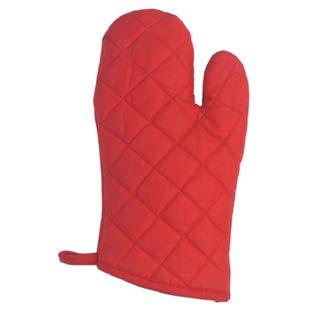
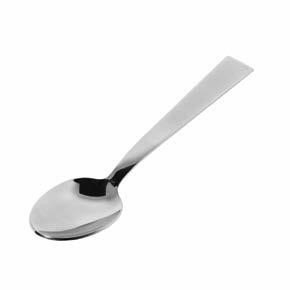

conductors. The metal part of the pan moves heat to the food inside to cook the food. The plastic handle protects our hands. The cotton glove protects our hands, too.
What about glass? It is not as good of a conductor or insulator as the other materials. It is used to conduct heat in pots and pans, and can also be used to insulate. It used to be used on power and telephone lines as an insulator.
We use insulation in our homes to help stop the movement of thermal energy in our homes. When we spend money to heat or cool the air inside, we want to keep it in. Insulation helps slow down the movement of thermal energy, so it seeks balance more slowly, and keeps us more comfortable longer. Heat moves in more than one way than conduction. How else can thermal energy move?
Fluids are liquids and gases. Heat also moves in fluids. Heat doesn’t move by conduction. In fluids, the molecules are too far apart to conduct energy as they vibrate. The molecules in fluids are free to move and spin. As they move, they bounce against each other. The molecules with more energy give up some energy. The molecules with less energy gain some.
Heat energy in liquids and gases moves in currents by convection.
If we heat water on a stove, the water molecules begin to move and flow faster. The molecules near the flame have more energy. They push against each other and move farther apart.
The water at the top of the pan is cooler. Its molecules don’t have as much energy. They are closer together than the molecules of hot water. They are denser.
The cooler, denser molecules flow down. The warmer, less dense molecules rise up. They form currents of flowing molecules. During this motion, the hotter molecules transfer energy to the cooler molecules. This transfer of heat through the motion of currents is called convection.
Heat also moves by convection in gases. Air is the gas you know best. You may have noticed that the top floor of a building is warmer than the basement. The air near the ceiling is warmer than the air near the floor.
The molecules of gases are like molecules in liquids. The more energy they have, the farther apart they are. In a room, the cooler, denser air flows down. The warmer, lighter air rises. A current of flowing air is formed.
The warmer molecules give up energy as they bounce against cooler molecules. They give up some energy, become cooler, and flow down again. The heat is transferred by convection.
Most of the Earth’s energy comes from the sun. Every day, the sun gives off a lot of energy. However, it doesn’t start out traveling to us as thermal energy (heat). It comes from the sun in rays or waves called radiant energy. Heat must move from molecule to molecule and there are no molecules in space. Solar energy travels in rays or waves until it hits the Earth. Once the radiant energy hits the Earth, it hits molecules in the air, ocean, on land, and on living things. The molecules turn this energy into heat that we can feel.
The same thing happens with a fireplace or a campfire. When you light a fire the radiant energy from the fire will spread out, or radiate, to the molecules in the air close by. You can feel the heat from the fire when standing a few feet away because the molecules radiate the heat out. The area closest to the fire will stay the warmest until the fire goes out. Once that happens, the thermal energy continues to radiate out and back until the room or the area has reached an even temperature.
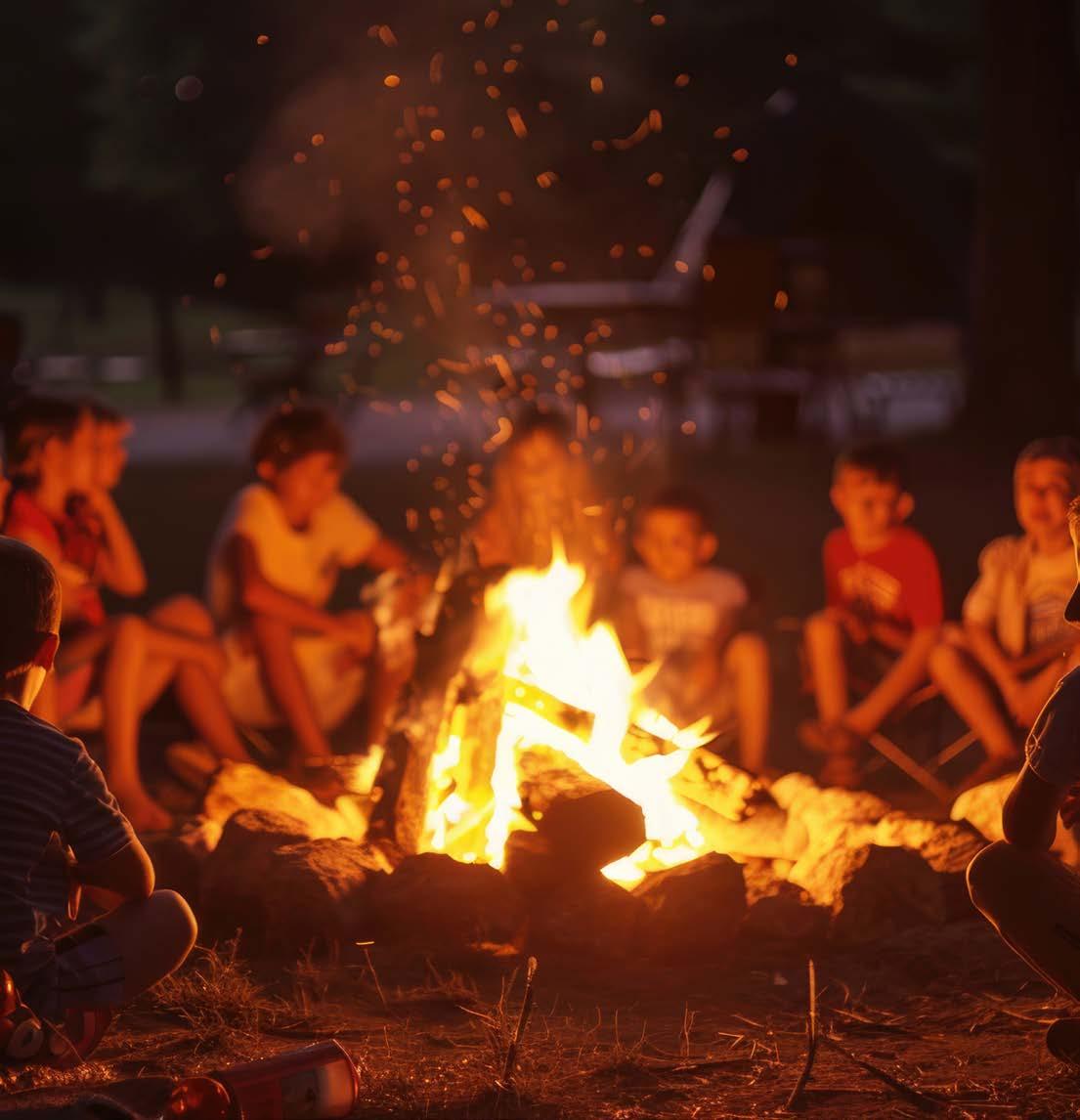
Heat and temperature are different things. Two cups of boiling water would have twice as much heat as one cup of boiling water, but the water would be at the same temperature.
A giant iceberg would have more heat energy than a cup of boiling water, even though its temperature is lower. It would have more heat energy because it is so big.
Heat is the total amount of kinetic energy in a substance. Temperature is a measure of the average kinetic energy of the molecules in a substance. Temperature is also described as a measure of the hotness or coldness of a substance.
Heating and cooling systems are used in buildings to help keep the temperature comfortable. These systems use more energy than any other systems in schools, offices, and homes. Natural gas and electricity are usually used to heat, and electricity is used to cool. Using these systems wisely can reduce environmental concerns, like releasing carbon dioxide. You can save energy and money too, by having proper insulation to seal cracks around doors and windows, taking care of the heater and air conditioner regularly, changing the filters, and practicing energy-saving behaviors.
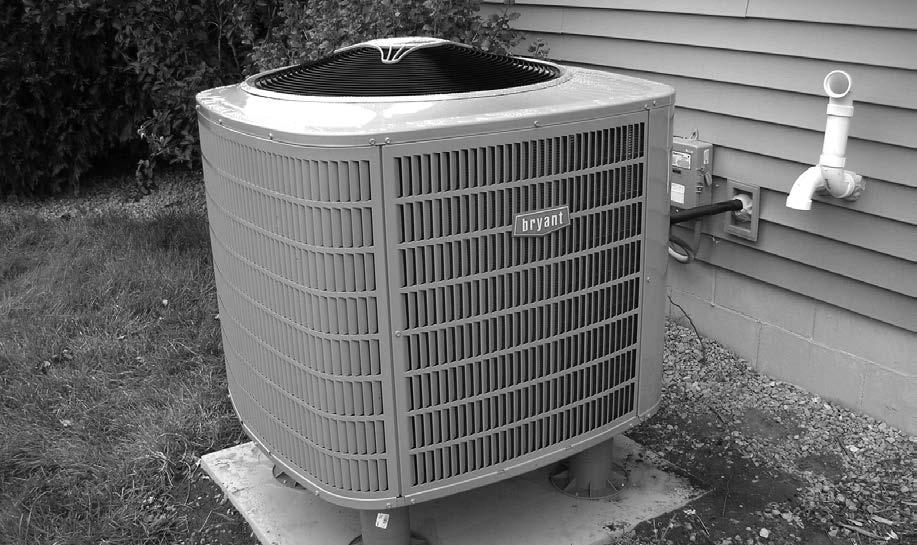
We use thermometers to measure temperature. In schools, homes, and offices, these devices are called thermostats. They help measure the temperature of a room and communicate with the heater or air conditioner to turn it on when needed. Programmable thermostats automatically control the temperature of buildings for time of day and can save energy and money. During heating seasons, for example, they lower the temperature of a building when no one is using it. When people are active in the building, the thermostat automatically raises the temperature.

Air leaking in and out of a building wastes energy. Insulation slows down the movement of thermal energy (heat) and keeps the inside air separated from the outside air. Building owners can reduce heating and cooling costs by buying proper insulation. Some insulation materials work better than others in certain climates. Building owners should pick the right insulation for their weather and building design.
Insulation is like a blanket for buildings, but air can still leak in or out through small cracks. Sometimes, many small leaks can add up to the same amount of energy loss as leaving a door wide open. One of the easiest energy-saving measures is to caulk, seal, and weather-strip cracks and openings to the outside. These tools and actions are called weatherization. Homeowners can typically save up to $200 a year in heating and cooling costs by air sealing their homes and adding insulation. Larger buildings, like schools and offices, can save even more by following the same steps.

Some air leaks happen around and through the doors and windows. Doors should seal tightly and have door sweeps at the bottom to prevent air leaks. Insulated storm doors help stop leaking air. School entryways with two sets of doors are built to keep cold air from blasting inside during the winter and outside during the summer. Both sets of doors should always be kept closed.
Most buildings have more windows than doors. The best windows shut tightly and are made of two or more pieces of glass. Caulk or seal any cracks around the windows and make sure they seal tightly. If you have older windows, you can install shutters or sheets of clear plastic to create added air barriers. Insulated blinds also help to prevent air flow and are often good when you want to sleep in! During heating seasons, open them on sunny days and close them at night. During cooling seasons, close them during the day to keep out the sun.

Moisture is a term used to describe water as a liquid and a gas. Like heat and air, it is important to have the right amount of moisture in a building. Most moisture inside is water vapor, or in our air molecules. The amount of water vapor in the air is important to our health and comfort.
Humidity tells us how much water vapor is in the air. It is measured with a tool called a hygrometer. Air acts like a sponge and absorbs water during evaporation. Warmer air will hold more water vapor. Colder air does not hold as much water vapor.
When cold air from outdoors is heated, it feels very dry and makes the occupants of the building uncomfortable with stuffy noses, chapped lips, and dry skin. Air that is too dry can cause health problems when our sinuses are too dry. When there is too much moisture in a room, especially a room like a classroom where paper and books are found, it can create a problem. As you know, paper is made from wood. Fungi, like mold and mildew, grow in warm, moist, dark places. When moisture can build up on a surface, mold and mildew grow. As the molds get bigger, they release spores, which are carried in the air to other surfaces where they can grow more mold. These spores can be harmful to breathe in.
The right amount of moisture in the air in a room will help it keep the temperature from dropping or rising too much, which can reduce the number of times a heating or air conditioning system has to run. Humidity levels should be kept between 30% and 60%. Using a dehumidifier in the summer and a humidifier in the winter can help keep the appropriate humidity levels.
Bringing in air from outside can create humidity problems in our air. However, we need to bring in fresh air to help our systems run and our schools and homes to stay healthy. Imagine if you never brought fresh air inside your school. What a stinky place it might be! Ventilation systems bring in fresh air. Schools need this fresh air to run the heating and cooling systems properly and help keep humidity under control in warm climates.
You don’t think too much about the hot water you need at school, but it is definitely needed. At home you probably have a water heater that is fueled by natural gas or electricity. When you turn the hot water on in the kitchen or bathroom, you might have to let the water run a bit before it’s warm.
In a school, having water heater would mean you might need to let the water run for a very long time before water could reach faucets far away from the heater. Most schools have more than one large water heater, and the hot water is constantly moving through the school with a pump, so hot water can get to the sinks quickly.

The temperature of the water at school is important. At home, you probably have your hot water heater set at 120-140 °F, and rarely any higher because of the danger of a serious burn injury. This is true for the hot water at school except in the kitchen. Cafeteria workers must wash all dishes and serving equipment in water that is at least 160 °F. But at this temperature, you can burn your skin.
This is why many schools have more than one water heater. They can have one for the cafeteria and the other for the rest of the school. The cafeteria water is kept very hot while the rest of the school is kept at a safer temperature that is much lower.

Most of a school’s energy is used to control the temperature of the air in the buildings. Students and teachers work better when they are comfortable—not too hot or too cold. What is a comfortable temperature? It depends on what you’re doing. You can be comfortable in very cool weather with just a shirt and shorts if you’re playing soccer. The people sitting in the stands might need a jacket. It depends on the season, too. A day that feels cool in the summer might feel very warm in the middle of winter.
1. Heat flows from hotter objects to cooler objects. Heat flows until everything is in balance. That means the objects in your classroom are at the same temperature. Touch objects made of the materials listed below and circle how they feel. Do they feel hotter than the air, colder than the air, or the same?
2. Using a thermometer, record the temperature of the things listed in Fahrenheit (F) and Celsius (C) scales.
3. Fill a container with water the same temperature as the air in the classroom. Use the thermometer to find the temperature. How does it feel compared to the air?
4. Do you usually like the air to be hotter or colder than your body? Why?
5. When might you want water to be colder than your body?
6. When might you want the water to be the same temperature or warmer than your body?
Make a graphic organizer to help you remember the difference between conduction, convection, and radiation. Tape, glue, or staple this organizer in your science notebook.
1. Holding your blank piece of paper up and down, fold the short edge down to the long edge, as shown. Cut off the bottom edge to leave behind a perfect square.
2. Fold the other corners together and open the square out, so you have a large folded “X” on the paper. Cut Away
3. Fold the corners to the center of the square, making a smaller square with triangle-shaped flaps.
4. On the outside of one flap, write “Moving Thermal Energy”. Lift the flap, and beneath it, write the way thermal energy is moved, either from low temperature to high temperature, or from high temperature to low temperature (there is only one right answer!). On the outside of the other three flaps, write “Conduction,” “Convection,” and “Radiation.” Underneath the flaps, define each method of thermal energy transfer using words or pictures, and provide an example of each.
How does the material a cup is made of affect the transfer or movement of heat?
Hypothesis
Read the procedure and record your hypothesis in your science notebook using an "If... then... because..." format.
4 Cups of different materials, but similar size
4 Digital thermometers
4 Rubber bands
Plastic wrap
Stopwatch or clock with second hand
Ice water
Room temperature water
Hot water
Beaker or graduated cylinder
NOTE
When the procedure calls for:
ice water, use water <7°C or <45°F
room temperature water, use water between 20-22°C or 68-72°F hot water, use water just under boiling (the teacher should handle the container for hot water)
1. Create the table below in your science notebook three times-once for the ice water, once for the room temperature water, and once for the hot water. Fill in the blanks in the chart for the material each cup is made of.
2. Using a rubber band, attach a thermometer to the outside of each cup.
3. Fill each cup with the same amount of ice water, using your beaker or graduated cylinder.
4. Cover each cup with plastic wrap.
5. In 30 second intervals, record the temperature of each cup for a total of three minutes.
6. Calculate the change in temperature (ΔT) for each type of cup.
7. Repeat steps 3-6 with room temperature water and hot water.
Use the data from the table to create a graph in your science notebook.
1. Which material had the greatest change in temperature? Is it a good insulator?
2. Which cup would be the best for hot chocolate? Which would keep a drink cold the longest? Use data to support your answers.
3. What variables might have affected the results of your experiment?
Circle the materials that will make the best insulators for a drink. Remember, good insulators will trap the heat in, and keep the cold out.


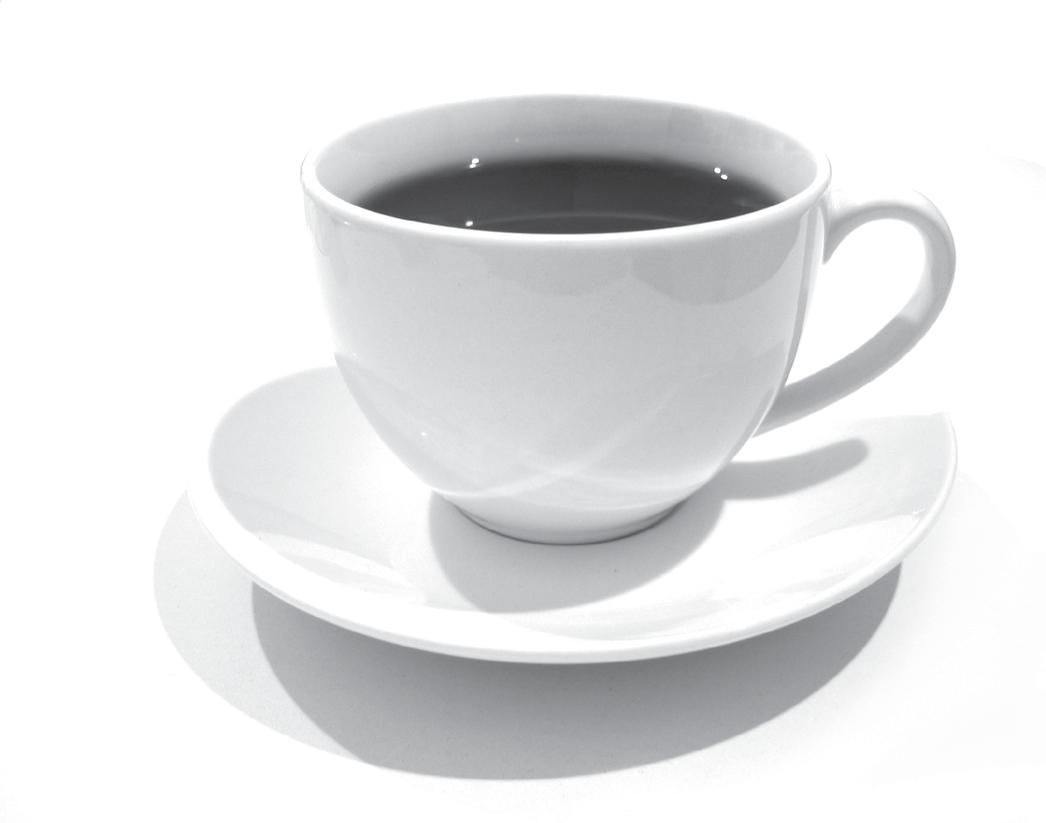


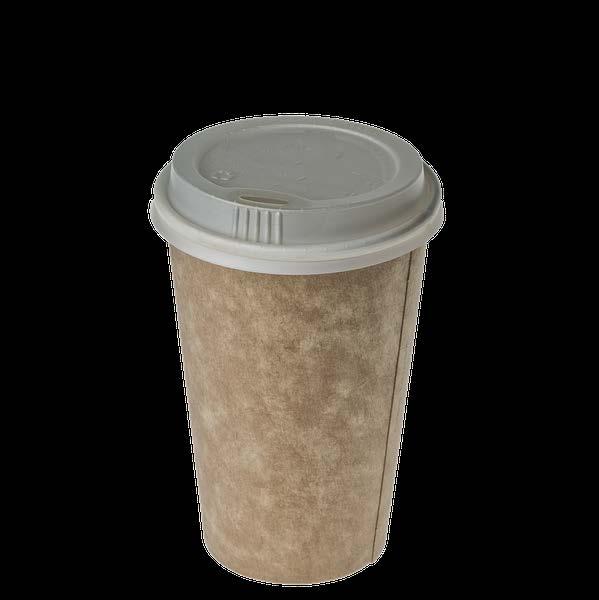
How can you tell if the windows in your home or school seal tightly?
Hypothesis
In your science notebook, write a hypothesis stating how well you think the windows and doors in your home or school are sealed against air leaks.
Materials
1 Pencil
1 Strip of Tissue Paper, 1” x 12”
Tape
1. Use a small piece of tape to attach the tissue paper to the pencil as shown.
2. Turn off anything that might cause an air current in the room, such as a fan or the heating system. Turning the heat off for a few minutes should not cause the room or building to get cold.
3. Stand in front of the window you are observing and record your data. Touch the glass, the frame, and the wall around the window.
4. Hold the pencil so it is parallel to the floor. Allow the tissue paper to hang loosely from the pencil. Place the pencil in front of the lower edge of the closed window. Observe if the tissue moves. Record your observations.
5. Repeat the test around the other edges of the window, and around all the other windows and doors, until you have tested all the doors and windows of the room you are in.
6. Move to another room based on your teacher’s suggestion. Copy the data section below, and continue testing.
7. Answer the conclusion questions when you’re finished collecting data.
Data
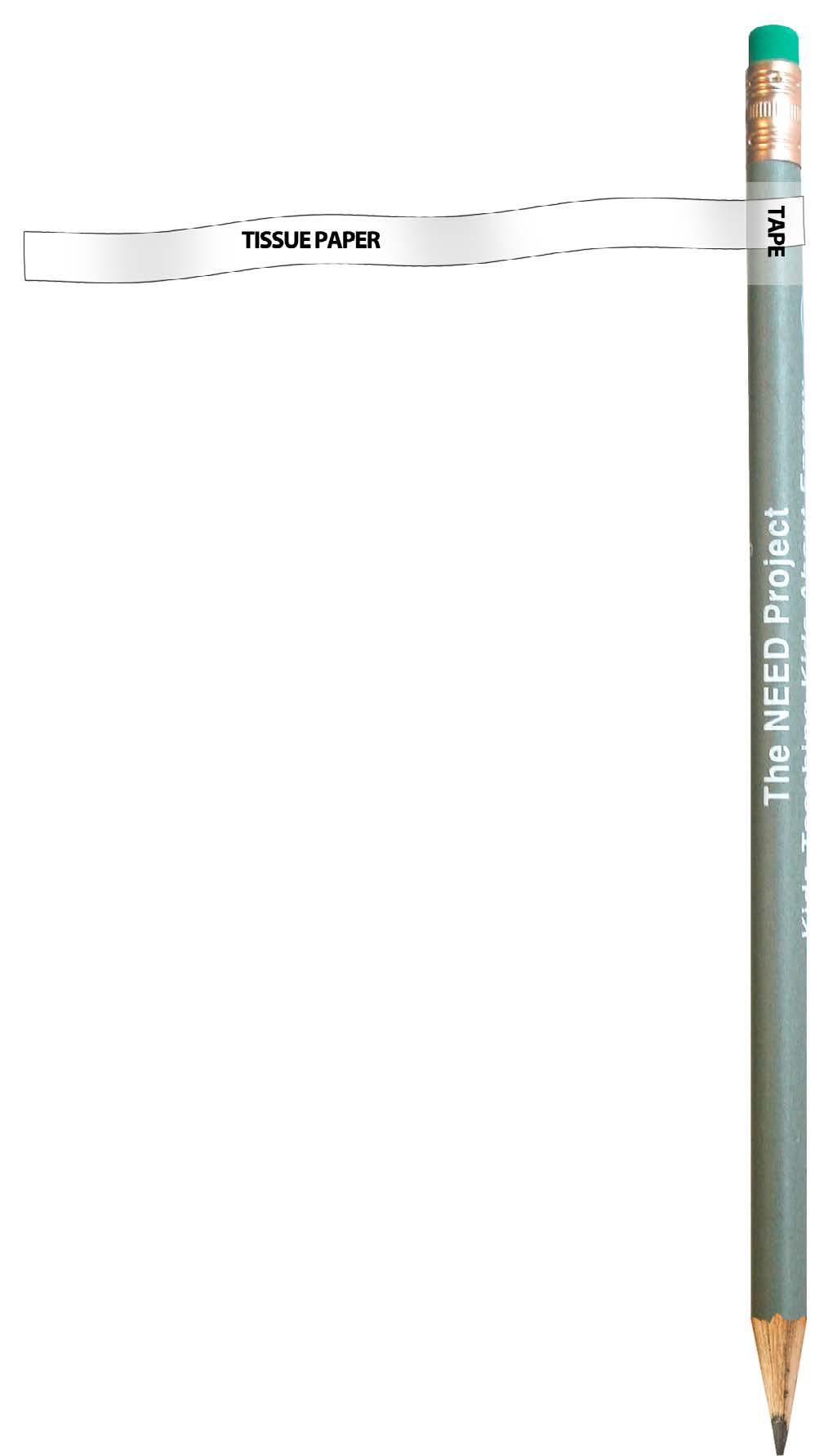
Room you are testing: __________________________________________________________
Window you are testing: ___________________________________
Can you see more than one layer of glass in the window? Yes No Is the window latched closed? Yes No
What is the window frame made of? ______________________________________________________
Can you see any gaps around the window that should be filled with caulking or weatherstripping? _______________
How do the window glass and area around the window feel to the touch? ___________________________________
Results of tissue paper test:
1. Do you think the windows conduct thermal energy too easily or are they well insulated? Use the data you recorded to help answer the questions.
2. Are the windows well sealed? What evidence that you collected supports your answer?
3. How warm or cool did the walls feel compared to the windows when you touched them?
4. What could you do to your school windows or doors to stop thermal energy movement?

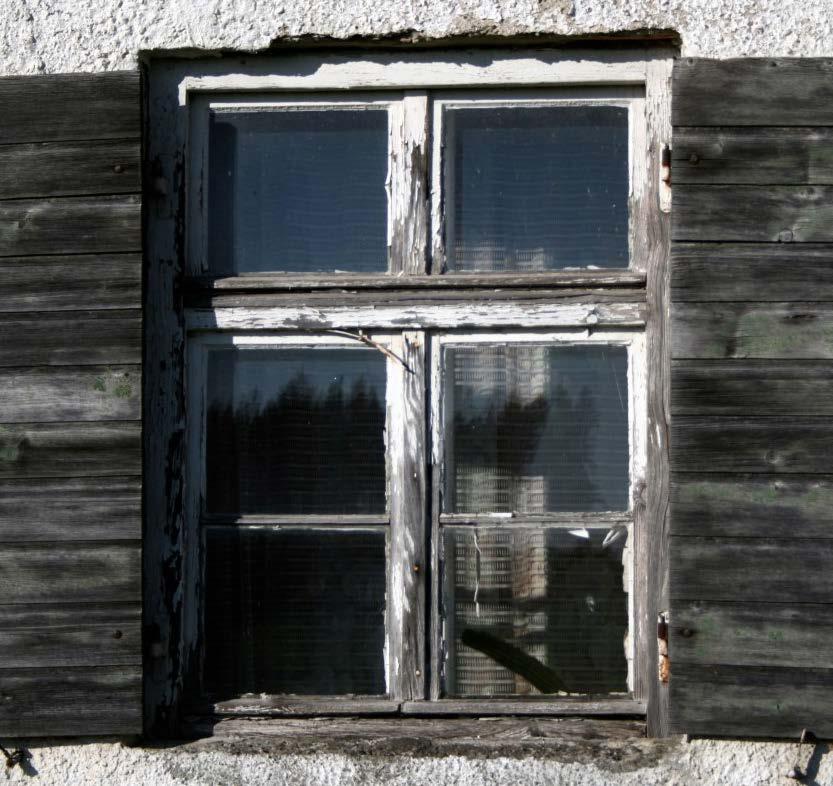
Electricity is a mysterious force. We can’t see it like we see the sun. We can’t hold it like we hold coal. We know when it is working, but it is hard to know exactly what it is. Before we can understand electricity, we need to learn about atoms.
Everything is made of atoms—every star, every tree, every animal. Even people are made of atoms. The air and water are, too.
Atoms are the building blocks of the universe. They are very, very tiny particles. Millions of atoms would fit on the head of a pin.
An atom looks like the sun with the planets spinning around it. The center is called the nucleus. It is made of tiny protons and neutrons. Electrons move around the nucleus in energy levels, or shells, far from the nucleus.
When an atom is in balance, it has the same number of protons and electrons. It can have a different number of neutrons.
Electrons stay in their shells because a special force holds them there. Protons and electrons are attracted to each other. Protons have a positive charge (+) and electrons have a negative charge (–). Opposite charges attract each other.
The electrons near the nucleus are held tight to the atom. Sometimes, the ones farthest away are not. We can push some of these electrons out of their energy levels. We can move them. Moving electrons are called electricity.
In most objects, all the atoms are in balance. Half of the electrons spin in one direction; half spin in the other direction. They are spaced randomly in the object. Magnets are different.
In magnets, the atoms are arranged so that the electrons are not in balance. The electrons don’t spin in a balanced way. Instead, the electrons line up. This creates a force of energy called a magnetic field around a magnet.
We call one end of the magnet the north (N) pole and the other end the south (S) pole. The force of the magnetic field flows from the north pole to the south pole.
Have you ever held two magnets close to each other? They don’t act like most objects. If you try to push the two north poles together, they repel each other. If you try to push the two south poles together, they repel each other.
Turn one magnet around and the north and the south poles attract. The magnets stick to each other with a strong force. Just like protons and electrons, opposites attract.
Like Poles
Opposite Poles
We can use magnets to make electricity. A magnetic field can pull and push electrons to make them move. Some metals, like copper, have electrons that are loosely held. They are easily pushed from their shells.
Magnetism and electricity are related. Magnets can create electricity and electricity can produce magnetic fields. Every time a magnetic field changes, an electric field is created. Every time an electric field changes, a magnetic field is created. Magnetism and electricity are always linked together; you can’t have one without the other. This is called electromagnetism.
Power plants use huge magnets to make, or generate, electricity. In a generator, a big coil of copper wire spins inside the magnets. As it spins, the magnetic fields push and pull electrons in the wire.
The electrons in the copper wire flow into power lines. These moving electrons are the electricity that powers our houses.
Power plants use giant wheels, called turbines, to spin the coils of wire in the generators. It takes a lot of energy to spin turbines. Power plants use many fuels to get that energy.

The spinning turbines make electricity. It flows into power lines. The electrons flow through the power lines to our houses. They flow through the wires in our houses and back to the power plant. Then they start their journey again. Transporting Electricity
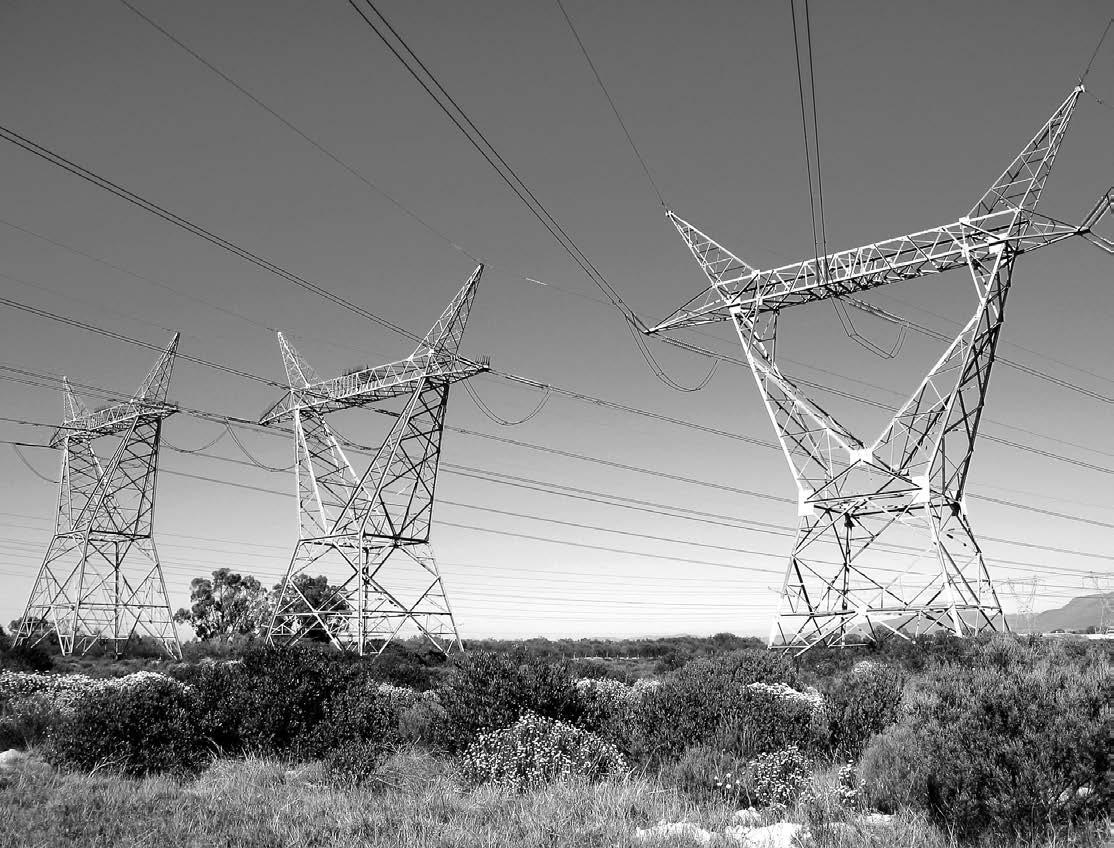
There are many different types of power lines. The power plant makes electricity. The electricity flows through transmission lines held up by power towers. The transmission lines carry large amounts of electricity to electric poles in cities and towns.
Distribution lines carry small amounts of electricity from the electric poles to houses and businesses. Transformers make sure the electricity is in the proper units (voltage) for us to safely use.
Electricity travels in closed loops, or circuits (from the word circle). It must have a complete path from the power plant through the wires and back.
If a circuit is open, the electricity can’t flow. When we flip on a light switch, we close a circuit. The electricity flows through the light and back into the wire. When we flip the switch off, we open the circuit. No electricity flows to the light. It flows straight through the switch.
Electricity does a lot of work for us. We use it many times each day. It lights our homes, warms and cools our rooms, and helps us keep them clean. It runs our TVs, video games, computers, and copiers. It cooks our food and washes the dishes. It can power our lawn mowers and leaf blowers. It can even run our cars. We use a lot of electricity every year.


We use electricity to perform many tasks. We use units called watts, kilowatts, and kilowatthours to measure the electricity that we use.
A watt is how much electric power an appliance uses. Every appliance requires a different number of watts to work correctly. We measure smaller devices like hair dryers, coffee pots, and phone chargers in watts. A kilowatt is 1,000 watts. It is used to measure larger amounts of electricity for appliances like refrigerators, air conditioning systems, and solar panels on your roof.
A kilowatt-hour (kWh) measures the amount of electricity used in one hour. We pay the electric utility company for our electricity by the kilowatt-hour. They will send us a bill for our monthly use. Most homes pay about 15 cents per kilowatt-hour, and most schools pay about 12 cents. You can look up how many kilowatt-hours you use and how much you pay on your bill.

Appliances, machines, and electronic devices use about 11 percent of a school’s energy. Any appliance that is designed to change temperature uses a lot of energy. These devices can include items like a refrigerator, washer, water heater, dryer, dishwasher, water fountain, or even vending machine. There are many more smaller devices and machines that are plugged in in every classroom. When you add all of these up, it can be a lot! You can help save energy at school by:
Turning off appliances and machines when you aren’t using them;
Keeping the doors closed as much as possible on refrigerators and freezers— know what you want before you open the doors;
Being aware that many machines use energy even when turned off—save energy by unplugging them;
Inspecting and dusting air vents to remove dust; and
Replacing seals on refrigerators and freezers if they do not seal tightly.
When the school or your family members shop for a new appliance or electronic device, they should think of more than just the purchase price. They should also think about how much it will cost to run the device, because they will pay their bills to use it each month for the next 10 to 20 years. An energy efficient appliance will usually cost more to purchase, but it will save money in energy costs each month. An energy efficient model is almost always a better deal in the long run.
School leaders or folks at home will want to look for two labels when they buy a new appliance or machine. The first way to save money is by looking for the ENERGY STAR® label. This label guarantees that the product saves energy. ENERGY STAR® appliances and electronics use special technologies that use less energy and water than standard models. A list of energy efficient appliances can be found on the ENERGY STAR® website at www.energystar.gov.
Generating, transporting, and using all this electricity to power our lives makes a big impact on our environment. Most of our electricity is generated using nonrenewable sources like coal, natural gas, and uranium. Locating, removing, transporting, and using those sources requires energy, too.
When coal and natural gas are burned to make electricity, carbon dioxide is released into the atmosphere. When too much of it builds up in the atmosphere, it leads to climate change.
Another way to determine which appliance is more energy efficient is to look at their EnergyGuide labels. The government requires most appliances to display bright yellow and black EnergyGuide labels in the store. These labels do not tell which appliance is the most efficient, but they will show how much energy it can use in a year and how much it costs to operate it. When shopping, it is helpful to compare these yellow labels to help determine which machine is the best for you.

The atmosphere around the Earth works just like a blanket on your bed by trapping heat and holding it in. Water vapor, carbon dioxide, and other gases are called greenhouse gases because they absorb thermal energy (heat). This is called the greenhouse effect, and it’s what keeps us from freezing to death when we are too far away from the sun. But just like too much candy, too much of the greenhouse effect is not a good thing. Burning fossil fuels and releasing too much carbon dioxide is causing the atmosphere and also the oceans to get warmer than they should be.
Every time we turn on the lights, or run an electric appliance, we are responsible for releasing more carbon dioxidede into the atmosphere. There are some things we really must use, like medical equipment to keep us healthy and refrigerators to make sure our food is safe to eat. But there are plenty of other choices we can make about our energy use each day that can impact the environment in a good way. Open a window instead of running the air conditioner. Read a book instead of watching TV. Eat cold pizza for a snack instead of using the microwave. Once you start thinking about the choices you can make, you will be surprised at how much you can do.
Electricity is amazing. It gives us heat and light, and runs appliances—our TVs, computers, refrigerators, hair dryers, gaming systems, and washers. Electricity can also be dangerous. It can cause fires and injuries, even death.
Don’t insert anything into an outlet except a plug.
Don’t pull on the cord to unplug an appliance, hold the plug and pull.
Dry your hands before you plug in or unplug a cord.
If a plug is broken or a cord is cut or worn, don’t use it.
Don’t plug too many cords into one outlet.
Turn off a light or unplug it before changing a light bulb.
Never touch the inside of an appliance while it’s plugged in.
Keep appliances away from water. Don’t use a hair dryer if there’s water in the sink nearby.
If there’s a big storm, turn off the TV and computer.
Don’t touch any power lines outside.
Some power lines are buried underground. If you are digging and find a wire, don’t touch it.
Don’t fly a kite or climb a tree near a power line.
We rely on electricity every day. Electricity provides us with the energy to do many things. We have appliances and machines that change electrical energy into other forms of energy, and then they do work for us.
1. What would life be like if the power was turned off and there was no electricity? Would you be able to survive? Why or why not?
2. List 10 electronic items that you think would be difficult to live without.
3. Look at your list above. Which five items do you think you need to survive? Explain and give reasons for each item.
4. Describe how your life would be different without electricity.
Explain what each of the components numbered below does to get electricity from the generator to the consumer.
The Kill A Watt® meter allows users to measure and monitor the power consumption of any standard electrical device. You can obtain instantaneous readings of voltage (volts), current (amps), line frequency (Hz), and electric power being used (watts). You can also obtain the actual amount of power consumed in kilowatt-hours (kWh) by any electrical device over a period of time from one minute to 9,999 hours. A kilowatt is 1,000 watts.

1. Plug the Kill A Watt® meter into any standard grounded outlet or extension cord.
2. Plug the electrical device or appliance to be tested into the AC Power Outlet Receptacle of the Kill A Watt® meter.
3. The LCD displays all meter readings. The unit will begin to accumulate data and powered duration time as soon as the power is applied.
4. Press the Volt button to display the voltage (volts) reading. 5. Press the Amp button to display the current (amps) reading.
6. The Watt and VA button is a toggle function key. Press the button once to display the Watt reading; press the button again to display the VA (volts x amps) reading. The Watt reading, not the VA reading, is the value used to calculate kWh consumption.
7. The Hz and PF button is a toggle function key. Press the button once to display the Frequency (Hz) reading; press the button again to display the Power Factor (PF) reading.
8. The KWH and Hour button is a toggle function key. Press the button once to display the cumulative energy consumption. Press the button again to display the cumulative time elapsed since power was applied.
Which appliances and machines in your schools use the most energy?
Hypothesis
Materials
Pluggable appliances and devices
Kill A Watt® meter
Procedure
Calculate how much it costs to operate the machines in your classroom that you looked at before. You need to know the wattage, the cost of electricity, and the number of hours a week each machine is used.
1
Estimate the number of hours per week the item is used. Enter it onto the chart. Multiply by 40 to get hours per year of use. We are using 40 weeks for schools, because school buildings aren’t used every week of the year. Using the copier as an example, if it is used for ten hours each week, we can find the yearly use like this:
2
Unplug the device safely. Plug the Kill A Watt® meter into the outlet. Plug the device into the front of the Kill A Watt® meter. Press the “Watts” button on the front of the meter and record the watts the devices uses in the chart.
*NOTE: Do not unplug a device at school without making sure it’s allowable to do so. Some devices like copiers require long start-up times, and you know what happens if a computer is unplugged before work is saved.
3
Electricity is measured in kilowatt-hours. You will need to change watts to kilowatts. One kilowatt is equal to 1,000 watts. Divide the watts by 1,000 to get kilowatts. Write this number in the chart. Using the copier as an example, divide like this:
kW = W/1,000
kW = 1,265/1,000 = 1.265
4 Remember, we pay for electricity by kilowatt-hours. One kilowatt-hour costs the school about 12 cents. To find the yearly cost, we multiply the hours per year by kilowatts. Then multiply this by the cost of a kilowatt-hour ($0.12). We can figure out how much it costs to run the copier for a year by using this formula:
Yearly cost = Hours used per year x Kilowatts x Cost of electricity (kWh)
Yearly cost = 400 hours/year x 1.265 kW x $0.12 kWh
Yearly cost = 400 x 1.265 x 0.12 = $60.72
A very short time ago, we used a lot of energy in the form of electricity to make light to be able to see. Thirty percent of the electricity schools used was for lighting, and homes used about 14 percent of their electricity consumption for lighting. But, ten years ago, many homes, schools, and other commercial buildings used a lot of incandescent lighting. These types of bulbs were perfected by Thomas Edison in 1879 and didn’t change much for the next 125 or more years! Incandescent bulbs have always been very inefficient. They use about 90 percent of the electricity they use to make heat. This heat makes a wire inside the bulb glow to make light. Only 10 percent of the electricity the bulb uses turns into light!
In 2007, the U.S. passed a law called The Energy Independence and Security Act. This law changed the efficiency of light bulbs we used most often. This law says that bulbs now must be 30 percent more efficient than the original, inefficient incandescent bulbs. The government hoped that these rules would give the people the same amount of light but with less energy use. Most incandescent light bulbs were taken off store shelves and can no longer be purchased.
The lighting efficiency laws led to major energy savings for schools and homes. Newer, efficient lighting now totals only 17 percent of the electricity used in schools.
There are several light bulb options that meet the new efficiency standards. Energy-saving incandescent, or halogen, bulbs are different than original incandescent bulbs because they have a capsule around the glowing wire that is filled with a gas called halogen. This gas allows the bulbs to last three times longer and use 25 percent less energy.
Compact fluorescent light bulbs (CFLs) provide the same amount of light as incandescent bulbs, but use up to 75 percent less energy and last ten times longer. CFLs produce very little heat. CFLs have a small amount of mercury inside and should always be recycled rather than thrown away. Many retailers recycle CFLs for free. CFLs may be hard to find on shelves in stores because a more efficient bulb called an LED has taken its place.
Light emitting diodes (LEDs) are the most popular light bulb today. These bulbs are the same types of bulbs you see in exit signs, clocks on your DVD player, and the on/off light on your remote. This technology can also be used to light your whole house. Lower prices and app-based technologies are causing LEDs to replace CFLs and incandescents. LEDs are the most energy-efficient lighting choice available today. LEDs use 75 percent less energy than traditional incandescents, and can last 25,000 hours. LEDs are similar in cost to other bulbs and use even less energy than CFLs.
Lighting is a big part of a school’s energy use. Think of the number of classrooms in your building. Each classroom or space must be lit. Because schools need to light larger spaces, they often use different shaped bulbs than the ones you use at home. Schools most often use fluorescent lights in a long tube shape.
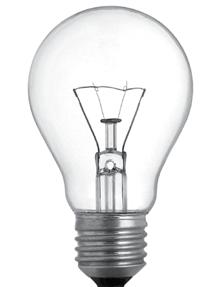



LEDs offer better light quality than incandescent bulbs and halogens, last 25 times as long, and use even less energy than CFLs. LEDs now have a wide array of uses because technology has improved and costs have decreased. CFLs are not as available in stores, and their use has drastically decreased, like the use of halogen bulbs. Some may still use these bulbs in their fixtures at home. They come in several shapes and sizes.
A fluorescent lamp is a glass tube. The inside of the tube is coated with a powder that can glow when it absorbs energy, much like stickers you put on the ceiling to glow at night time. The glass tubes are filled with gases. At the ends of the tubes, are the wires called electrodes. When the tube is connected to the electricity in the light fixture, the electrodes heat up. This heat causes the vapors in the tube to get excited and radiate their energy into the powder coating. Once the powder coating absorbs energy it glows to make light.
Schools often use multiple sets of fluorescent tubes in one classroom. These tubes can be different sizes. The smaller bulbs use less energy to create the same amount of light.
No matter how efficient a school’s light bulbs are, there are always ways to save more energy on lighting in the school.
Shut off lighting when you leave the room;
Use natural light by opening curtains or blinds when you can;
If the room has more than one light switch, try using only the number of lights needed for the people in the space; and
Switch to more efficient fluorescent or LED lighting when possible.
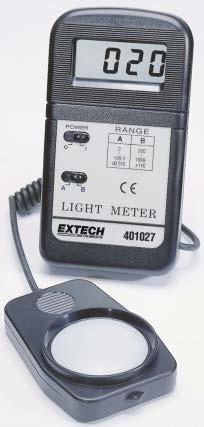

1. Insert the battery into the battery compartment in the back of the meter.
2. Slide the ON/OFF Switch to the ON position.
3. Slide the Range Switch to the B position.
4. On the back of the meter, pull out the meter’s tilt stand and place the meter on a flat surface in the area you plan to measure.
5. Hold the Light Sensor so that the white lens faces the light source to be measured or place the Light Sensor on a flat surface facing the direction of the light source.
6. Read the measurement on the LCD Display.
7. If the reading is less than 200 fc, slide the Range Switch to the A position and measure again.
A lumen (lm) is a measure of the light output (or luminous flux) of a light source (bulb or tube). Light sources are labeled with output ratings in lumens. A T12 40-watt fluorescent tube light, for example, may have a rating of 3050 lumens.
A foot-candle (fc) is a measure of the quantity of light (illuminance) that actually reaches the workplane on which the light meter is placed. Foot-candles are workplane lumens per square foot. The light meter can measure the quantity of light from 0 to 1000 fc.
Another measure of light is its brightness or luminance. Brightness is a measure of the light that is reflected from a surface in a particular direction. Brightness is measured in footlamberts (fL).
The adults in your home are probably always telling you to turn off lights when you are not using them. Why? The electricity needed to use the lights costs money; if your family spends too much money on electricity, there is not as much money left for other things.
People in schools may or may not pay as much attention to lights left on. Why? Schools must pay for electricity, too. In fact, almost one-fifth (17%) of the electricity used in a school is for the lights. If you can use less electricity for lights, your school will pay less money.
Using electricity also affects the environment. Carbon dioxide (chemical formula CO2) is a greenhouse gas, which means it traps and holds heat. Scientists have shown that using energy has caused a rise in greenhouse gases in the atmosphere. This is leading to climate change all around the world. Most scientists agree that these climate changes may be permanent if we do not change our ways.
Climate change changes in weather patterns over a long period of time
Greenhouse gas a gas in the atmosphere that traps and holds heat, much like a glass greenhouse does
Illuminance the amount of light that hits a surface
Watt the unit measuring power, which is how fast energy is used
1. What does illuminance mean?

Draw a picture to show illuminance. Write a definition in your own words.
2. What kind of light fixtures do we have in our classroom?
Talk with your teacher or another knowledgeable adult about the light fixtures in your classroom. The part of the fixture that makes the light is called the lamp. What kind of lamps are in your light fixtures? They may be fluorescent or LED.
How many lamps are in each fixture? Ask the adult how many watts each lamp uses.
Make a diagram of one light fixture. Label the length of the fixture, how many lamps are in each, and list how many watts each lamp uses.
3. How many watts do our classroom lights use each day?
Fill in the number of lamps per fixture from your fixture diagram in step 2. Copy the number of watts per lamp from your fixture diagram in step 2.
Fill in the number of watts for each fixture from step 3. With a partner, count all of the fixtures in the classroom and write the number in the correct box.
4. How many kilowatt-hours of electricity do our classroom lights use each day?
A kilowatt-hour is the way the electric company charges us for our electricity use. It is the same as running an air fryer for 40 minutes or a vacuum cleaner for about an hour.
Total watts used by all light fixtures
Number of hours in one day
Number of watt-hours each day
Calculate the number of watt-hours used in your classroom each day. Fill in the total number of watts used by all light fixtures from step 3. Your teacher will tell you the number of hours the lights are on each school day.
Now change watt-hours to kilowatt-hours. Fill in the number of watt-hours each day from the previous calculation.
Number of watt-hours each day
5. How much money does it cost to use our classroom lights each day?
Number of kilowatt-hours each day
Electric utilities are paid for the electricity they provide by charging a certain amount for each kilowatt-hour used. Every building has at least one electric meter that shows how much electricity has been used. Your home has one, and your school probably has more than one.
Different kinds of customers pay different amounts of money for electricity. Because they use a lot of electricity, industrial customers, like factories, pay the least amount of money per kilowatt-hour. Residences pay the most, and commercial buildings like schools are somewhere in between. Your teacher will tell you how much money per kilowatt-hour to use when you figure out how much your lights cost each day.
Calculate how much your classroom lights cost for one day. Fill in the number of kilowatt-hours each day from step 4.
6. How much money does it cost to use our classroom lights each school year?
Now determine how much your classroom lights cost for one year. Fill in the cost to use your classroom lights each day from step 5. Your teacher will tell you how many days are in one school year.
$
Cost for classroom lights each day
Number of days in one school year
Cost for classroom lights each year
7. How much carbon dioxide is released into the atmosphere each day because of our classroom lights?
As stated in the Background, using energy produces carbon dioxide (CO2). This is because most of our electricity and transportation fuels come from coal, natural gas, and petroleum. These three nonrenewable energy sources are called fossil fuels. Burning fossil fuels for the energy stored in them produces carbon dioxide.
You can determine how much carbon dioxide your classroom lighting produces each day. Copy the number of kilowatt-hours used each day from the calculation in step 4. Your teacher will tell you how many pounds of CO2 are produced when one kilowatt-hour of electricity is used.
Number of kilowatt-hours each day
=
Pounds CO2 per kilowatt-hour
Number of pounds CO2 each day
8. How much carbon dioxide is released into the atmosphere each school year because of our classroom lights?
Now determine how much carbon dioxide is released in one school year. Copy the number of pounds CO2 each day from step 7, and the number of days in a school year from step 6.
Number of pounds CO2 each day
9. What is a foot-candle?
=
Number of days in one school year
Use a combination of words and pictures to show what one foot-candle is.
Number of pounds CO2 each year
10. What is the illuminance at my desk?
Can you remember what illuminance means? Think about how illuminance is important at school. You will use a light meter to measure the illuminance at your desk. Remember to step back from the meter so you are not blocking any of the light!
11. What is the illuminance at ___________________?
Look around your classroom. What are some areas with high illuminance? What are some areas with low illuminance? Fill in the list below with at least three areas you think have high illuminance and three areas you think have low illuminance.
Your teacher will assign at least one other place in your classroom to measure with the light meter. Before you use the light meter, use the data you gathered in step 10 to predict what you think the light level in your assigned area will be. Fill in the blanks with the place you were assigned and your prediction.
I predict the light level in/at __________________ to be ___________________ FC.
Use the light meter to measure the light level at your assigned location. Record this value below.
12. Is my classroom properly illuminated?
Scientists and engineers work with all kinds of data and instruments. Much of this information is used to make our lives better. These professionals will publish guidelines – called standards – that help others know what they think is best. People who study nutrition make recommendations about how many vitamins you should eat every day. Educators publish standards for classroom teachers so they know which topics to teach in each grade. Lighting specialists at the Illuminating Engineering Society have set some standards for illuminance in schools. Unless you are doing something special, like mixing paint colors to match something, or making very detailed drawings, your classroom lighting should be right around 50 foot-candles on your desk.
How does your desk compare to the standard of 50 foot-candles? Write your answer in complete sentences.
Talk with other students in a small group. What have you all learned about the illuminance of your classroom? Cite data from your investigations to support your statements.
13. What action can you take?
Some classrooms have energy-saving features like motion-detectors that turn off the lights after a certain amount of time, usually 15 minutes. Others have light switches for turning on lights in different areas of the classroom. Investigate your classroom for these features. Don’t forget about blinds or shades on the windows! Write a plan of action that describes the actions you and your classmates can take to use less electricity for lighting.
Below is a list of recommended illumination levels for school locations in foot-candles. These illumination levels align with the recommendations from the Illumination Engineering Society of North America. AREA
Auditorium (Assembly)
Auditorium (Exhibitions) 15-25
Auditorium (Social Activities) 5-10
Data compiled from the Illuminating Engineering Society

We have now investigated how we use energy in school. We have learned about heating and cooling, moisture, water heating, insulation, electrical devices, and lighting. If you have all of these items in place, does that mean your building is energy wise? Not always.
Each of the systems we investigated works on its own to keep you happy, safe, and comfortable in your school or at home. But, all of these systems really work together. If one item isn’t working correctly, it can make another work harder than it needs to. If you have very efficient cooling and heating, but very old lighting that makes too much heat, your heating or cooling system might be working harder than needed.
The heating, ventilation, and air conditioning system (HVAC) in your school is another good example. If your school has a boiler system for the whole school, it probably uses natural gas or fuel oil to heat water and pump it around the building to keep people warm. Some boiler systems boil the water to make steam to heat the building. Some boilers heat the water to almost boiling and use hot water and not steam.
No matter what, your school’s heating system needs pumps to send the hot water or steam out into the school. These pumps use electricity to pump the warmth around the building. If the power goes out, the pumps will not be able to distribute water or steam and the building will get cold. What would the school do?

Most schools have two systems that could each heat the building. They do this so that there is always a back-up. But, also, if the outdoor weather is extremely cold, the maintenance staff can turn on the second system to help the first system not work as hard. The two work together! If the windows and doors in the building leak air, the heating system must work extra hard. Your school might be using more energy, or even two systems, when it could use less!
During hot weather, instead of heating the building, a cooling system is used. Instead of circulating warm water to heat the rooms, a cooling system uses refrigeration to cool air, then blows the cool air into rooms. The cooling system and its fans use a lot of electricity.
Heating and cooling is even more challenging because of another part of the building that we haven’t yet explored – the people! The bodies in the building are always creating thermal energy. The school has to work hard to adjust the temperature as students move around in it all day. A room might feel very chilly when it is empty, but it’s best to adjust the temperature of the room when it is fuller. Otherwise, the room will be too hot to be comfortable. Even YOU are an important part of your school’s energy system!
There are many other systems that work together in other ways in your school, but the most important part of those systems is the people who use them. People are the brains behind energy consumption and they are the part of the system that will have the most impact on how much energy they use. The behavior and decisions you make can make a big difference in your school’s total energy use.
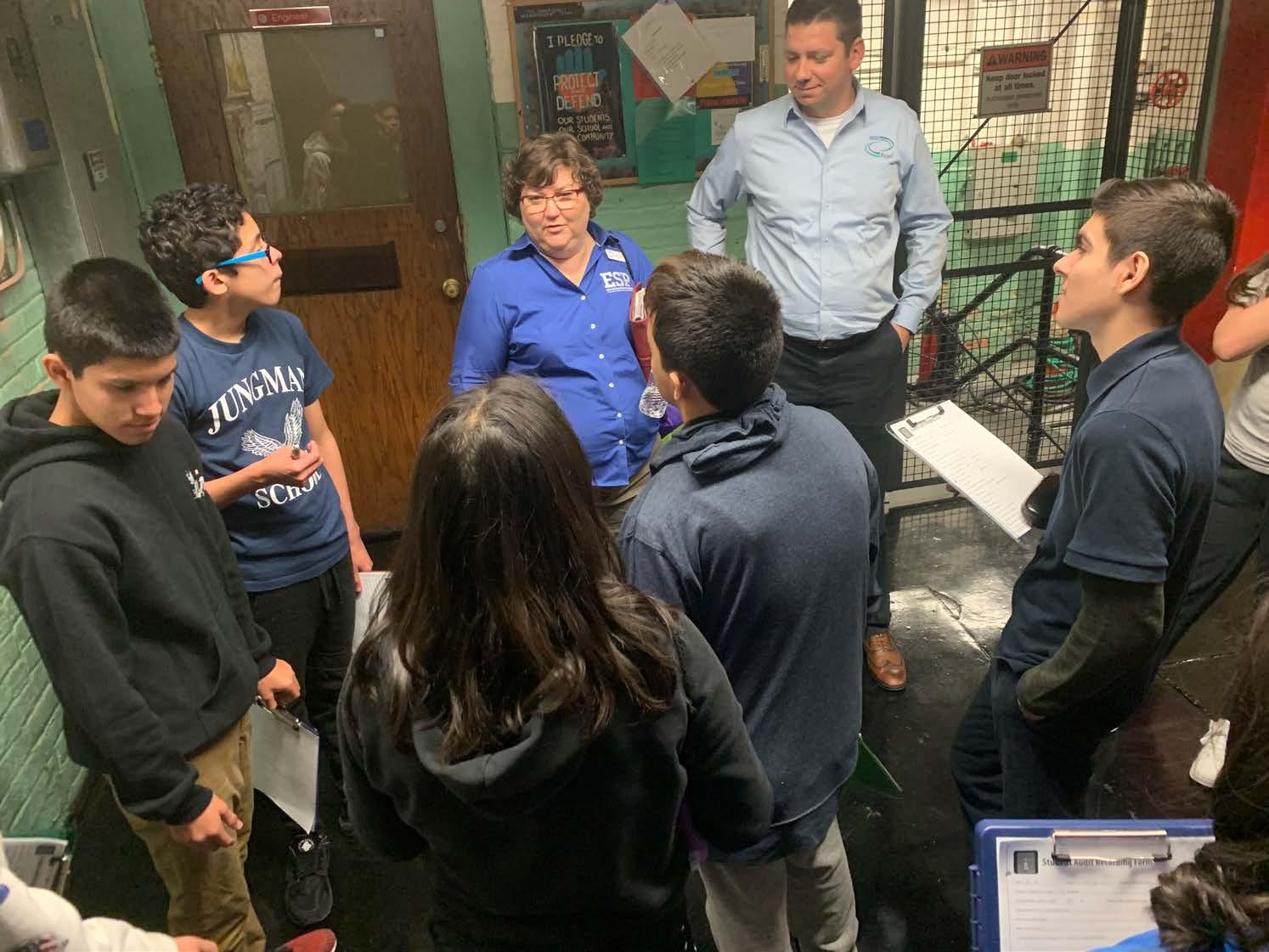

The early settlers wanted their children to know how to read and write. They wanted them to understand math. At first, the children were taught at home by their parents. Many times, there were only a few books in the house. The children learned to read using their parents’ books.
Some people hired tutors to live in their homes. The tutor taught all the children in the house. Sometimes, cousins would travel a long way to study with the tutor. They would stay at the house for months at a time to learn.
As more settlers arrived, towns were built. The people built schoolhouses and hired teachers so that their children could go to school. Usually, the schools were just one room. One teacher taught all the students from first grade through high school. Students shared desks as well as books. There was no paper to write on; the students wrote on pieces of slate.
In cold weather, a stove in the middle of the room provided the only heat. The best seats were near the stove. The biggest boys carried in wood to keep the fire going. Snow would blow in through the windows and cracks in the walls. Even with the stove going, sometimes the children had to keep their coats and mittens on all day.


There was no kitchen or indoor sink. The only light came in through the windows. The bathroom was an outhouse behind the school building. There was no kitchen. Students brought their lunches from home.
There were no school buses, of course. Students walked or rode horses to school. Sometimes, they lived several miles from the school.
Today, schools are very different. They have many rooms and many teachers. They have heat to keep students warm in winter. Many have air conditioning to keep students cool in warm weather. They have lights and bathrooms and kitchens. They have running water for washing hands, drinking, flushing toilets, and washing dishes.
Today’s schools have computers, tablets, projectors, copiers, televisions, clocks, intercoms, DVD players, CD players, gaming systems, and many other machines. They help students learn. Schools today use a lot of energy to provide a good place for students to learn. This energy costs a lot of money. You can save energy at school like you do at home.


Read about Grace Hopper Elementary School and Shirley Jackson Elementary School. As you read about each school highlight or underline energy use examples, and things that are different at each school. You will use this information to help create an action plan for one of the schools.
Hopper Elementary is a K-5 school in the Northeast U.S., where winters are cold and summers are warm. The school was recently renovated. Students had been used to a school that was built over fifty years ago, with old lights that flickered, drafty windows and doors, and never any hot water. Now, Hopper has brand new lighting, light switches, thermostats, and a heating, cooling, and ventilation system with efficient, programmable thermostats. The walls were given additional insulation, and windows were replaced with high-efficiency, triple-pane windows with weather stripping.
The old, fluorescent light fixtures have been replaced with smaller LED lights that direct the light directly on the work surface. The students like the light better because it’s not as bright, and some corners of the classroom can be a little darker for computer or tablet use, or even sneaking in a nap. All of the lights are controlled by motion-detecting light switches, which automatically turn the lights off in a room that has been empty after 20 minutes, but allow students and staff to immediately turn the lights off, too.
The students and staff work together to turn off lights when leaving a room empty and adjust the temperature a little bit at the end of each school day – cooler in winter and warmer in summer –to help save energy and give the heating and cooling system a break when the building is empty. They shut down computers and monitors every day at the end of the day and unplug unnecessary appliances – even the snack vending machines in the cafeteria! Teachers and staff only have coffee makers and refrigerators in the office and the teacher’s lounge. The science teachers have a minifridge for lab materials when they need it.
On top of these actions, the maintenance staff can look any time to see what systems are operating and what the temperature is in any room. There is even a smart phone app that can be used from anywhere to check what’s operating in the building! The building manager has set the heating system to come on October 1 and turn off April 1. The temperature is set higher during the school day and cooler at 4:00 pm and on weekends, when nobody is there. The air conditioner turns on April 1, turns off October 1, and is set in a similar fashion as the heating system, to use less energy in the evenings and on the weekend.
The students and the building manager have an energy team that monitors the school throughout the day. If they find a classroom has forgotten to turn off the projector or unplug the hotplate from lab, they will fix it and leave the classroom a note on their bulletin board. They also leave positive notes for classrooms who have improved or do good work. The school has monthly rewards when they hit energy targets.
Jackson Elementary school is a brand new school in a similar area of the Northeast U.S. The school is state-of-the art, with the most energy efficient lighting and light sensors, computer-controlled heating and cooling, and super fancy, efficient windows.
The principal at Shirley Jackson was recently talking to the principal at Grace Hopper. They were comparing notes about the features of their school, when it was discovered that Shirley Jackson’s utility bills are higher than the bills for Grace Hopper. The principal was shocked. How could this be if their school was built brand new, with even more efficient technologies than those of Hopper?
The principal set out to figure it out. She formed an energy team and appointed an energy manager, just like Hopper Elementary. They were to report back to the principal’s office with their findings. Hopefully they could fix this problem…and soon!
First the team walked the building in the evening, right after everyone had left. Walking into room after room, the lights would pop on because of the light sensors. They noticed the lights were on in many rooms that were empty, and the light sensors hadn’t yet turned them off. In some rooms, the blinds were open, and all the lights were on, with no one in the room! They also noticed a few classrooms, including the computer lab, had computers and monitors left on. The laptop cart was plugged in, but all the laptops were fully charged. Many of the teachers had coffee pots and personal refrigerators.
The team moved on to the rest of the building. They observed the water heaters, gym, cafeteria equipment, athletic equipment, offices, and the library. The team noticed that the hot water temperature was 150°F in all of the bathroom sinks and the kitchen. The sinks in the girls’ bathroom were dripping water. The water fountain by the gym was always running.
With the help of the energy manager, the team looked at the heating/cooling system controls and their utility bills. They noticed that it looked like the system was running 365 days a year, even though the school was empty over the recent holiday break. The air conditioning was still running in the building at 5 PM – no one is usually in the building that late.

Before moving on, let’s stop and reflect on everything you have learned. In Lesson 1 you learned about where we get energy, who uses it, and how we use it in school. Lessons 2, 3, and 4 focused on thermal energy (heat), electricity, and lighting. Lesson 5 discussed how all the energy systems and people in a building work together to influence energy use. Now you’re ready to take the next step and conduct a student energy audit.
Energy professionals take days to complete an audit. Your audit will not be that detailed but will still be very helpful to your school and your classmates. Each audit team will be assigned a work area to monitor. You and your audit team of 3 or 4 students will look at that area, make some notes, take some data, and make some recommendations.
Your teacher will assign a room or group of rooms for you to audit. Make observations at the times your teacher directs. You may audit the space twice - when the class is empty, and when it is full of students who are working. However, that is up to the teacher whose classroom you are auditing. If you enter a room that is in use, remember to be as quiet as you can, quickly take your measurements, and follow your teacher’s auditing rules.
Some classrooms will have similar data to other audit groups. There are some spaces, such as computer labs, science labs, gymnasiums, and the library, that use energy differently from a regular classroom. Make sure to take careful notes and record somewhat different data in those rooms.
There are several important auditing tools that you will use. The two most important tools are tools you have with you all the time, even at home. You are using one of those tools right now, as you read – your eyes. The other important tool is your ears. Many observations are seeing what is happening in a room and listening for things that are running. You will see more and hear best if you are quiet and not talking to your audit teammates.
The other auditing tools that you will use are a thermometer, hygrometer, light meter, and maybe a Kill A Watt® meter. Make sure you know how to use each of these tools. Take good care of them because other audit teams may have to use them, too.
There is much more to an audit than temperature, and whether the lights are on or off. You need to know what is turned on and running. Is that device supposed to be on and running at this time? You need to know if there are many windows or few, and how well they keep outside air outside. Make sure to take notes the same way in each space you visit. If you cannot explain to a team member why you think something is important, then it probably is not necessary.
Note unusual or different items such as fish or reptile tanks, fans, lamps, and other devices that are not part of each space or classroom, and anything else being used in the area. Do not note things that are not plugged in and running. Use the Kill A Watt® meter to determine how much electricity devices like projectors and DVD players are using – even if they are off but plugged in! Don’t forget things like vending machines and drinking fountains. If the cooling unit of a drinking fountain is not running properly, the water will come out warm. These are good notes to make.
Try to take measurements the same way each time. Don’t carry the thermometer by the probe; otherwise, it is only measuring how well your hands warm the thermometer, not the temperature of the room. The same is true about the hygrometer. Be careful not to get the hygrometer wet. When measuring light levels, place the sensor on the desktop or table top and don’t lean over it. Lean back and read the meter. It might be helpful to have one person hold the sensor in place while you read the meter. If you are measuring light in a room without tables, like the gym or hallway, hold the sensor at waist or chest height in front of you, and make sure you are not casting a shadow on it. You may need to record several temperatures or light levels in different parts of one room and then record the average. Make sure not to take your light meter outside or too close to bright light.
After you have taken measurements and made notes in your work area, it’s time to evaluate the data you have collected and make some suggestions that will save energy. Keep in mind there are some things that cannot change, like leaving lights on in the hallways or using computers during the day. It is not practical for teachers to turn copy machines off after using them because they require a lengthy amount of time to start up again. As you look at your data, think of things that can be done right away to save energy, and which things might need to be put off for the future.


Date: _________Time: _________Outdoor Temperature: _________
Describe the Weather: _________________________________________
Is the heat on? Yes No
Is the air conditioning on? Yes No
Name of room: ___________________________
Who is in the room? Empty One person A few people Many people
Number of Windows: __________________________
Indoor Temperature :__________________________
Humidity: _____________________
Is There a Thermostat? Yes No
Are there vents leading outside? Yes No
Can we open or close the vents? Yes No
Are the Windows Open? All Some None
Hot Water Temperature: _______________________
Are the Faucets Dripping? All Some None
Types of Lighting: ___________________________________
Light Meter Reading: _________________________________
This is: Too bright Just right Too dim
Can we adjust the lights? Yes No
Are the Lights On? All Some None
Are the Blinds Closed? All Some None
Are the Doors Tightly Closed? Yes No
List the electrical machines that are turned on.
Who is using the machines that are turned on?
Other Comments:

Answer the questions below after you audit your school.
1. What kind of energy is used to heat the school?
2. What kind of energy is used to cool the school?
3. What kind of energy is used to cook the food?
4. What kind of energy is used to heat the water?
5. What kind of energy is used to run the lights and machines?
6. List one thing (behavior or device) that could change.
7. List one thing (behavior or device) that you observed using energy properly.

There are lots of ways to save energy at school. Here are some things that we can do to be Building Buddies and save energy at school.



Saving energy is not hard—you just need to make it a habit. Be a Building Buddy!

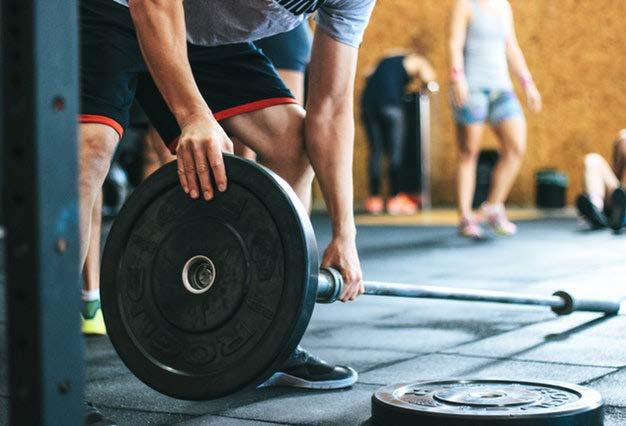
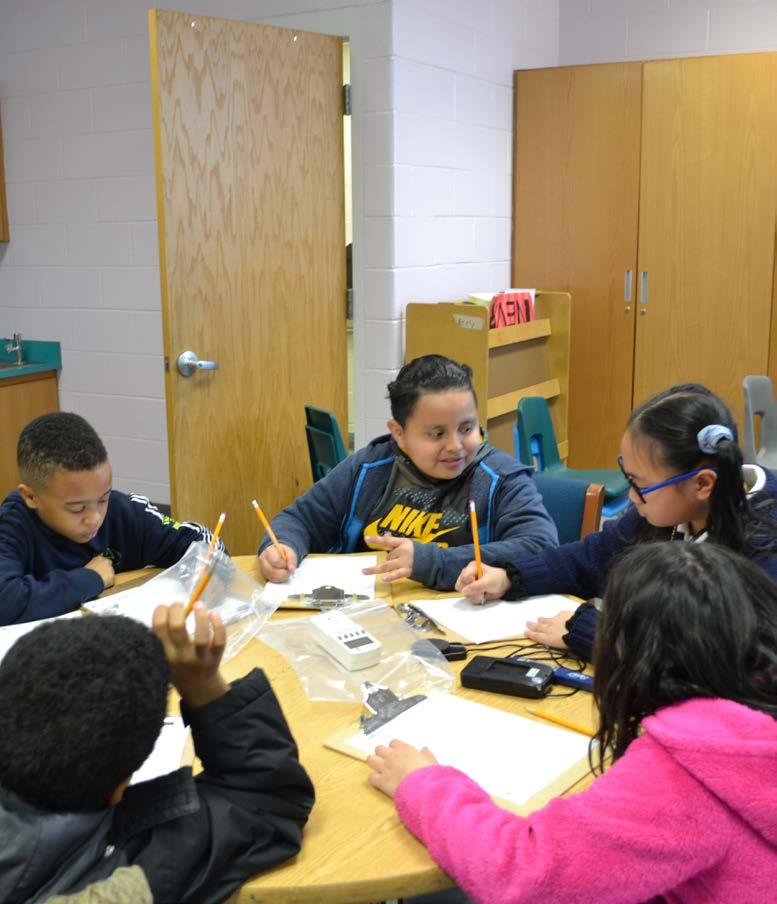





c


a appliance a piece of equipment, powered by electricity to make tasks easier; examples of common appliances are refrigerators, clothes washers and dishwashers, stoves, ovens and microwave ovens, toasters, radios, and televisions
atom a tiny unit of matter made up of protons, neutrons, and electrons
attract to draw closer or stick to
b battery a device that stores chemical energy that can later be transformed into electrical energy
c chemical energy the energy stored in chemical bonds of substances
circuit(s) a conductor or a system of conductors through which electric current flows
climate when the atmosphere allows light to pass through but traps the energy as heat
commercial a term used to describe users of energy who buy and sell goods; businesses, schools, hotels, restaurants, etc.
compact fluorescent light bulb (CFL)
a light bulb made of specially coated glass and filled with a gas that glows when electricty passes through it
conduction transferring energy from one place to another by touching
conductor a material that transfers energy through it well, often metal
convection transfer of energy through a liquid or a gas
d distribution line power lines that carry electricity at a safer voltage to consumers
e electric charge can be either positive or negative; electric charge determines how atoms act around other atoms and produces electromagnetic fields
electric poles tall poles that hold power lines above the ground electricity electrons in motion
electromagnetism having to do with magnetism produced by an electric current
electron the tiny, energetic pieces of atoms with a negative electric charge
energy the ability to do work, produce change, or move an object
energy conservation changing a behavior or action when using energy; riding a bike rather than driving a car
energy efficiency doing the same task but using less energy with a special tool or appliance
EnergyGuide
energy level
ENERGY STAR®
g gasoline
a label describing an appliance’s energy use and comparing it to the other models
area where electrons can be found outside an atom’s nucleus
a program that tests and certifies products based on efficiency features; labels help consumers save money
a fuel made from petroleum that runs many vehicles
gravitational potential energy energy of position or place
generator a device that turns motion from wind, water, or steam into electrical energy; generators are made of coils of wire and magnets that spin
greenhouse effect when the atmosphere traps heat from the sun, because of special gases; the atmosphere acts like a greenhouse
greenhouse gas gases that trap in heat; carbon dioxide, methane, and water vapor are major examples
h halogen light bulb a bulb that uses a heated filament and a special tube of gas to create light humidity the amount of water vapor in the air
hygrometer a tool used to measure humidity
i incandescent light bulb
industrial
a bulb using a heated filament to produce light; the filament is surrounded by a gas and creates more heat than light a term used to describe users of energy who create or produce goods; factories, power plants, mills, etc.
insulation a material or substance used to prevent the movement of thermal energy
insulator a material that does not transfer energy well
k kilowatt a unit of electric power or energy consumption (use); a kilowatt equals 1,000 watts
kilowatt-hour a measure of electricity; measured as 1 kilowatt (1,000 watts) of power over one hour
kinetic energy the energy of motion
l light emitting diode (LED) light bulb
a bulb or device that produces light from energized particles called photons
longitudinal waves that move in a horizontal fashion, in the same direction as the force acting on them
m magnet
any piece of iron, steel, etc., that has the property of attracting iron or steel
magnetic field the area of force surrounding a magnet
molecule two or more atoms bonded to each other that act like one atom
motion energy change in position, movement; a form of energy
n negative charge see electric charge
neutron
neutrally charged particle within the nucleus of an atom
nonrenewable fuels that cannot be easily made or replenished; we can use up nonrenewable fuels; oil, natural gas, propane, uranium, and coal are nonrenewable fuels
north (N) Pole
the end of a magnet where the magnetic field starts flowing from nuclear energy energy stored in the nucleus of an atom that is released by the joining or splitting of the nuclei
nucleus the core of the atom that holds protons and neutrons
p photosynthesis when plants make food (sugar) using the energy in sunlight
potential energy energy that is stored, not in motion
positive charge see electric charge
power lines
power plant
cables or wires that carry electricity from place to place
a place where electricity is created
power tower a tower that supports or holds transmission lines that carry high voltage electricity
pressure when a force is applied to a certain area
proton
positively charged particle within the nucleus of an atom
r radiant energy energy that travels in waves or rays, such as light
renewable fuels that can be easily made or replenished; we can never use up renewable fuels; types of renewable fuels are hydropower (water), solar, wind, geothermal, and biomass
repel to push away from residential a term used to describe users of energy in places where people stay or live; homes, apartments, condominiums, etc.
s sound energy energy that travels in longitudinal waves
south (S) pole
the end of a magnet where the magnetic field moves from the north pole
t temperature a measurement of how much the molecules of a substance are in motion
thermal energy energy within a substance, caused by friction or movement of the atoms and particles (heat)
thermostat a device that adjusts the amount of heating and cooling in a space
transportation a term used to describe users of energy that move goods, people, or services; buses, trains, pipelines, cars, etc.
transverse wave
a wave that moves in a different direction than the force applied turbine a device with blades, which are turned by water, wind, or steam
transformer a device that controls the voltage of the electricity on power lines
transmission line power lines that move larger amounts of power at a high voltage, usually over long distances
v ventilation a system that brings fresh air into a space and allows stale air to exit voltage power lines that move larger amounts of power at a high voltage, usually over long distances
w watt unit of power used for electricity measurements; rate at which work is done
weatherization materials used to protect an item from the weather; insulation, sealer, antifreeze, etc.

The NEED Youth Energy Conference and Awards gives students more opportunities to learn about energy and to explore energy in STEM (science, technology, engineering, and math). The annual June conference has students from across the country working in groups on an Energy Challenge designed to stretch their minds and energy knowledge. The conference culminates with the Youth Awards Ceremony recognizing student work throughout the year and during the conference.
For More Info: www.need.org/youthenergyconference/
All NEED schools have outstanding classroom-based programs in which students learn about energy. Does your school have student leaders who extend these activities into their communities? To recognize outstanding achievement and reward student leadership, The NEED Project conducts the National Youth Awards Program for Energy Achievement.
Share Your Energy Outreach with The NEED Network! This program combines academic competition with recognition to acknowledge everyone involved in NEED during the year—and to recognize those who achieve excellence in energy education in their schools and communities.
Students and teachers set goals and objectives and keep a record of their activities. Students create a digital project to submit for judging. In April, digital projects are uploaded to the online submission site.
Check out:
https://youthawards.need.org/project-guidelines/ for more project and application information. Be sure to explore the remainder of the site to learn more about the Awards weekend, see past winner sample projects, and more!
AES
AES Clean Energy Development
American Electric Power Foundation
Appalachian Voices
Arizona Sustainability Alliance
Atlantic City Electric
Baltimore Gas & Electric
Berkshire Gas - Avangrid
BP America Inc.
Bob Moran Charitable Giving Fund
Cape Light Compact–Massachusetts
Celanese Foundation
Central Alabama Electric Cooperative CITGO
The City of Cuyahoga Falls
Clean Virginia CLEAResult
ComEd
Con uence
ConocoPhillips
Constellation
Delmarva Power and Light
Department of Education and Early Childhood
Development - Government of New Brunswick, Canada
Dominion Energy, Inc.
Dominion Energy Charitable Foundation
DonorsChoose
East Baton Rouge Parish Schools
East Kentucky Power Cooperative
EcoCentricNow
EDP Renewables
EduCon Educational Consulting
Enel Green Power North America
ENGIE
Entergy
Equinix
Eversource
Exelon
Exelon Foundation
Foundation for Environmental Education
FPL
Generac
Georgia Power
Gerald Harrington, Geologist
Government of Thailand–Energy Ministry
Greater New Orleans STEM
GREEN Charter Schools
Green Power EMC
Guilford County Schools–North Carolina
Honeywell
Iowa Governor’s STEM Advisory Council -
Scale Up
Iowa Lakes Community College
Iowa State University
Illinois Clean Energy Community Foundation
Illinois International Brotherhood of Electrical
Workers Renewable Energy Fund
Independent Petroleum Association of New Mexico
Intuit
Iron Mountain Data Centers
Kansas Corporation Energy Commission
Kansas Energy Program – K-State Engineering Extension
Katy Independent School District
Kentucky Environmental Education Council
Kentucky O ce of Energy Policy
Kentucky Power–An AEP Company
Liberty Utilities
Llano Land and Exploration
Louisiana State Energy O ce
Louisiana State University – Agricultural Center
LUMA
Marshall University
Mercedes Benz USA
Minneapolis Public Schools
Mississippi Development Authority–Energy Division
Motus Experiential
National Fuel
National Grid
National Hydropower Association
National Ocean Industries Association
National Renewable Energy Laboratory
NC Green Power
Nebraskans for Solar
NextEra Energy Resources
Nicor Gas
NCi – Northeast Construction
North Shore Gas
O shore Technology Conference
Ohio Energy Project
Oklahoma Gas and Electric Energy Corporation
Omaha Public Power District
Ormat
Paci c Gas and Electric Company
PECO
Peoples Gas
Pepco
Performance Services, Inc.
Permian Basin Petroleum Museum
Phillips 66
PowerSouth Energy Cooperative
PPG
Prince George’s County O ce of Human Resource Management (MD)
Prince George’s County O ce of Sustainable Energy (MD)
Providence Public Schools
Public Service of Oklahoma - AEP
Quarto Publishing Group
The Rapha Foundation
Renewable Energy Alaska Project
Rhoades Energy
Rhode Island O ce of Energy Resources
Salal Foundation/Salal Credit Union
Salt River Project
Salt River Rural Electric Cooperative
Schneider Electric
C.T. Seaver Trust
Secure Solar Futures, LLC
Shell USA, Inc.
SMUD
Society of Petroleum Engineers
South Carolina Energy O ce
Southern Company Gas
Snohomish County PUD
SunTribe Solar
TXU Energy
United Way of Greater Philadelphia and Southern New Jersey
Unitil
University of Iowa
University of Louisville
University of North Carolina
University of Northern Iowa
University of Rhode Island
U.S. Department of Energy
U.S. Department of Energy–O ce of Energy
E ciency and Renewable Energy
U.S. Department of Energy - Solar Decathlon
U.S. Department of Energy - Water Power
Technologies O ce
U.S. Department of Energy–Wind for Schools
U.S. Energy Information Administration
United States Virgin Islands Energy O ce
Virginia Cooperative Extension
Vistra Energy
We Care Solar
West Virginia O ce of Energy
West Warwick Public Schools